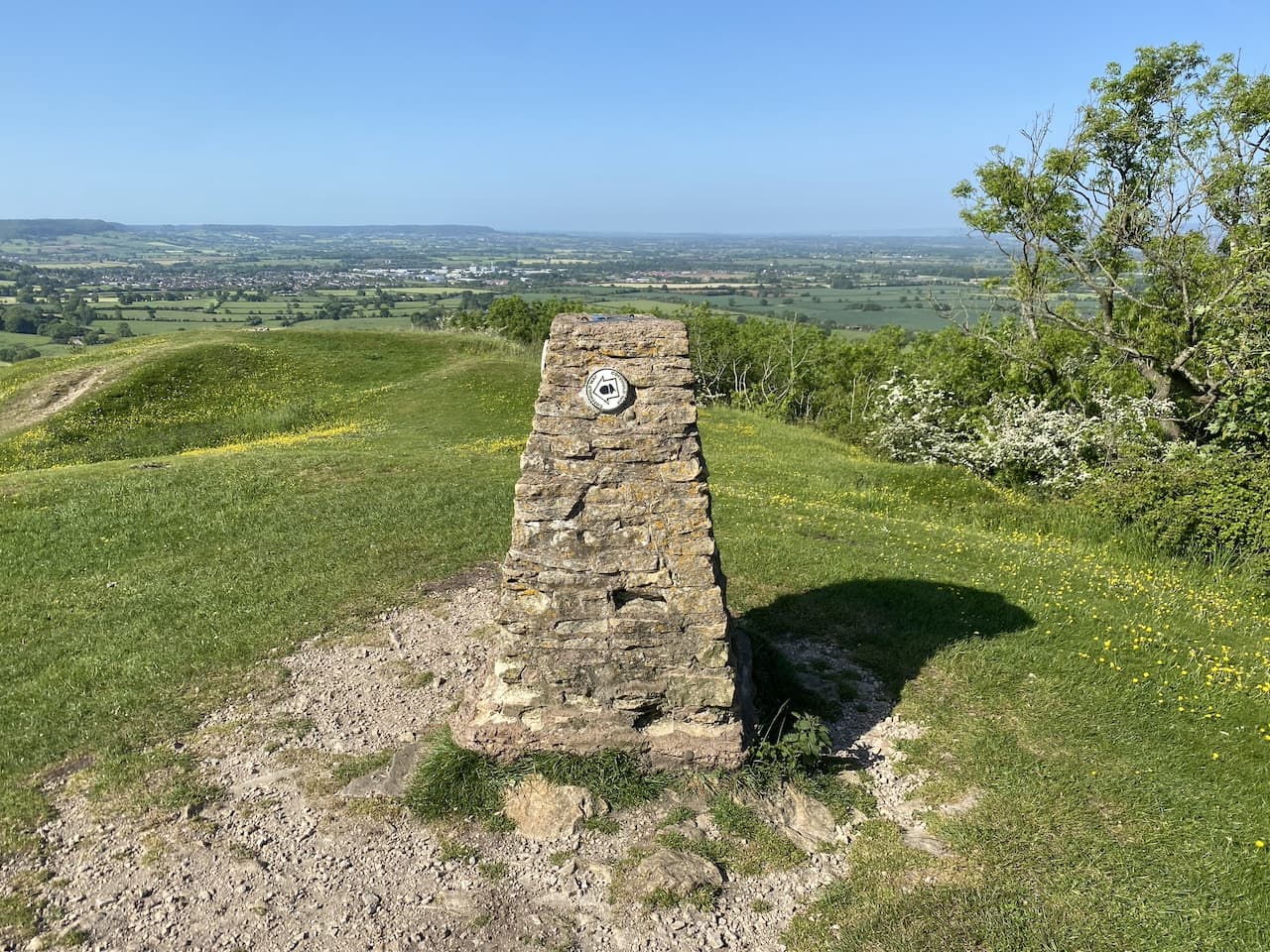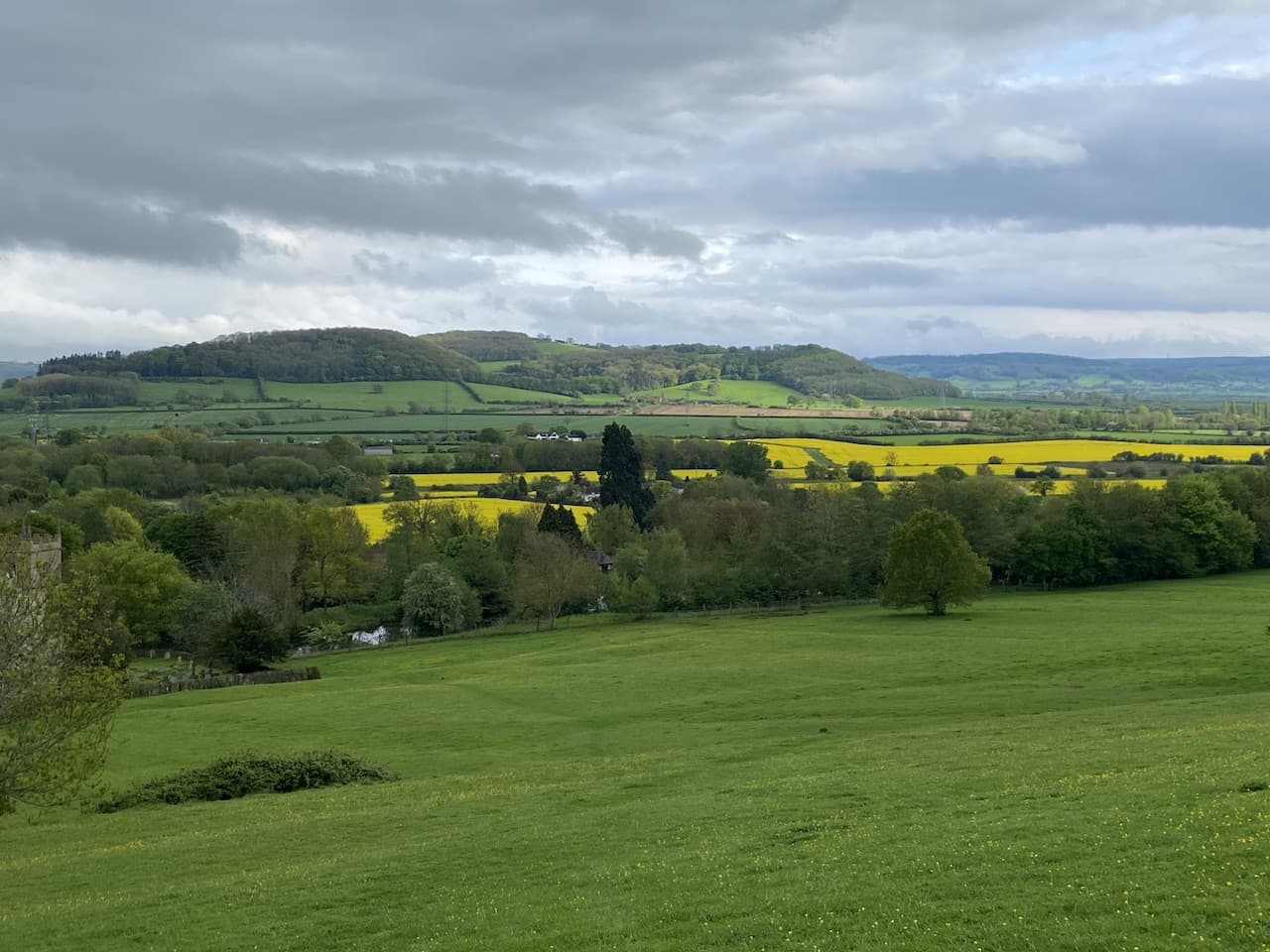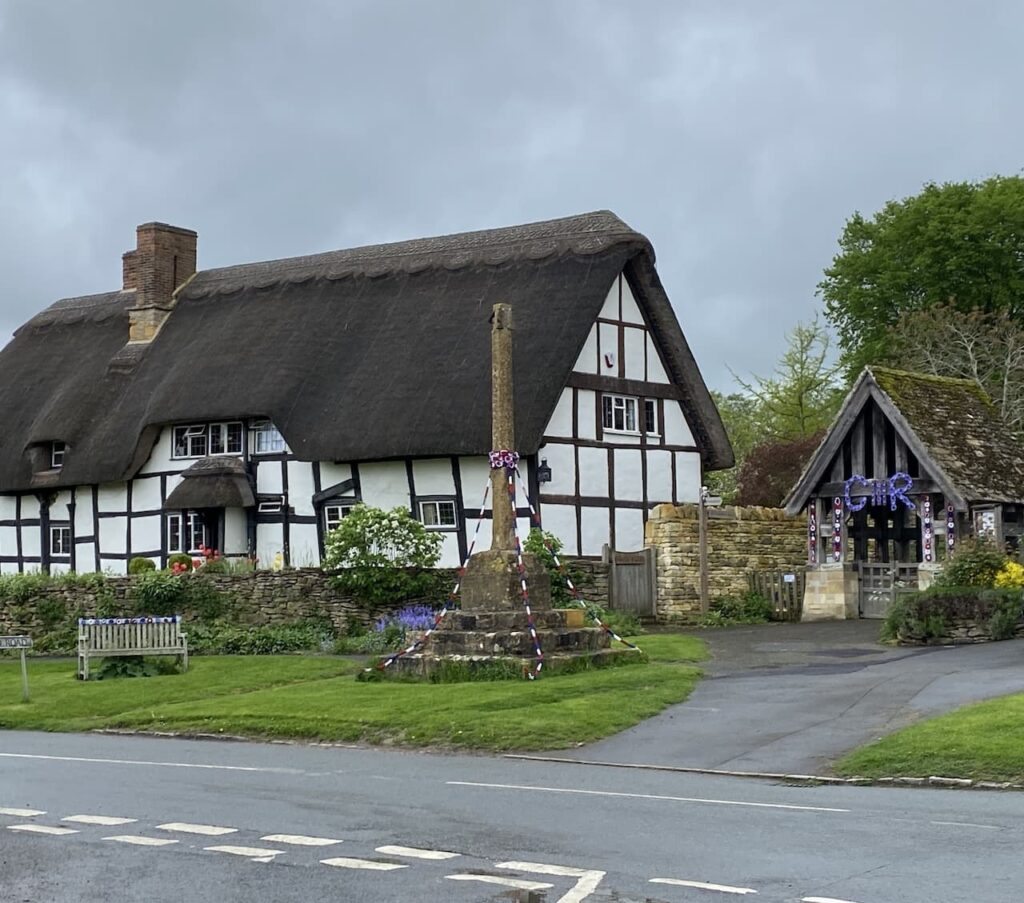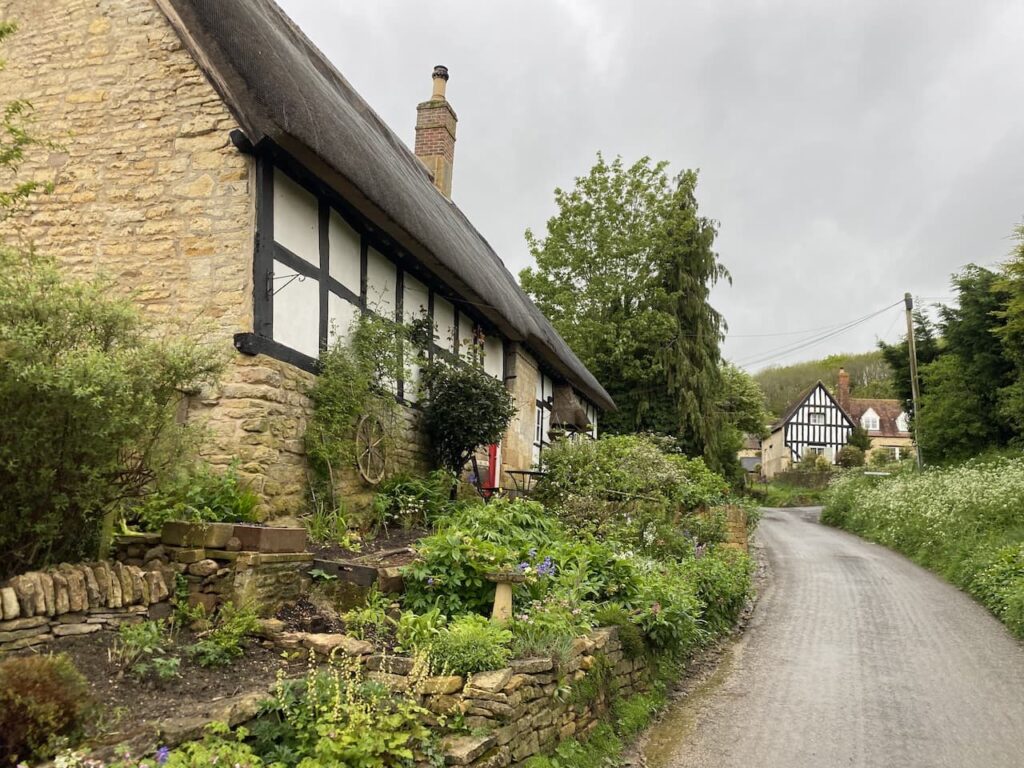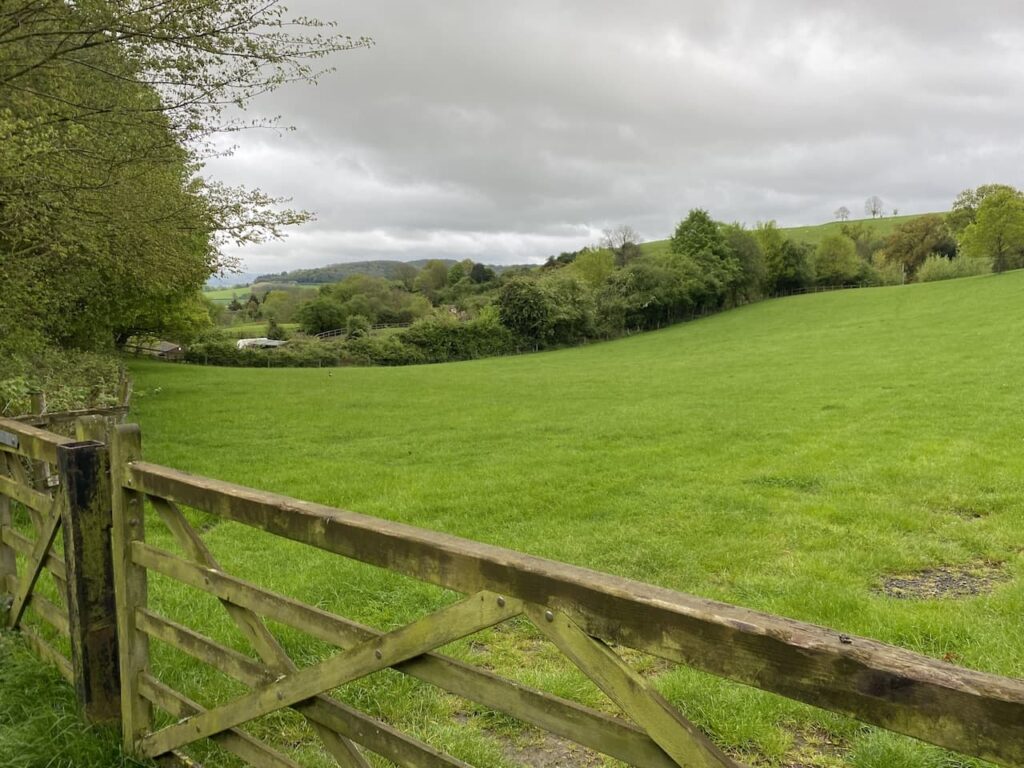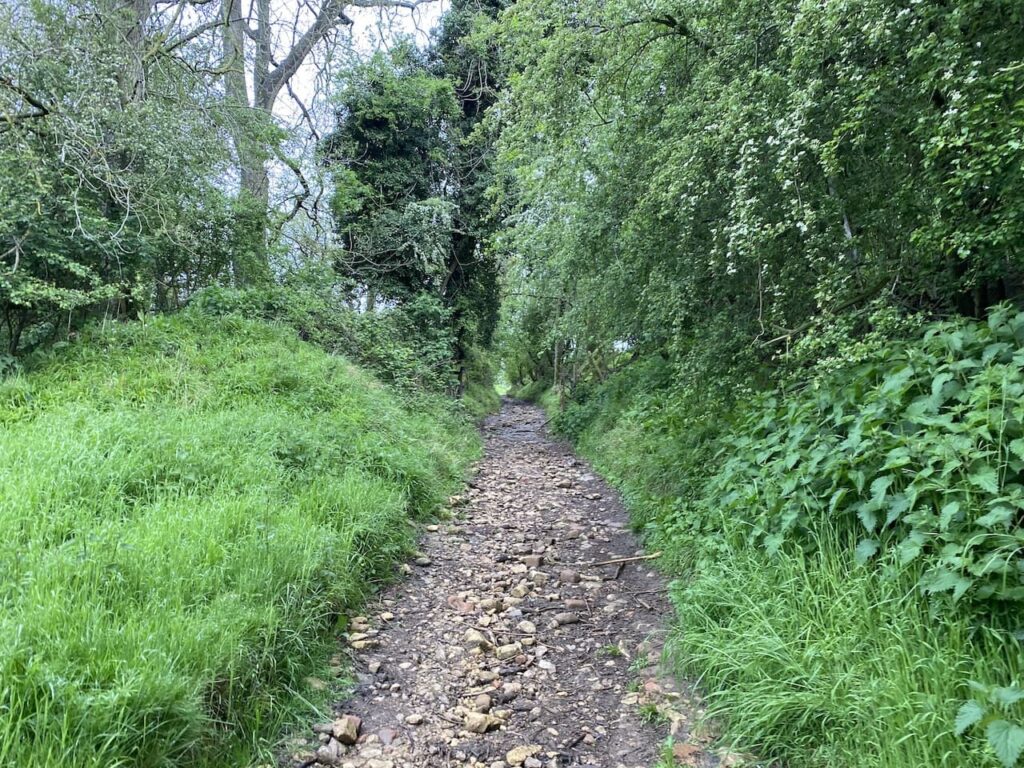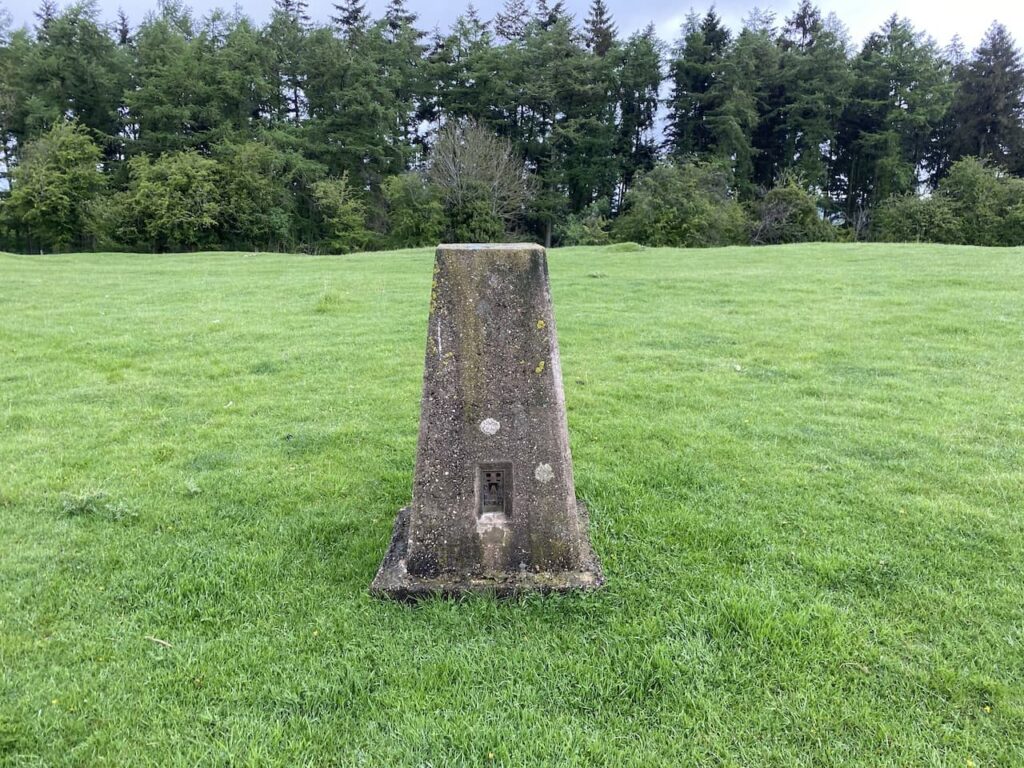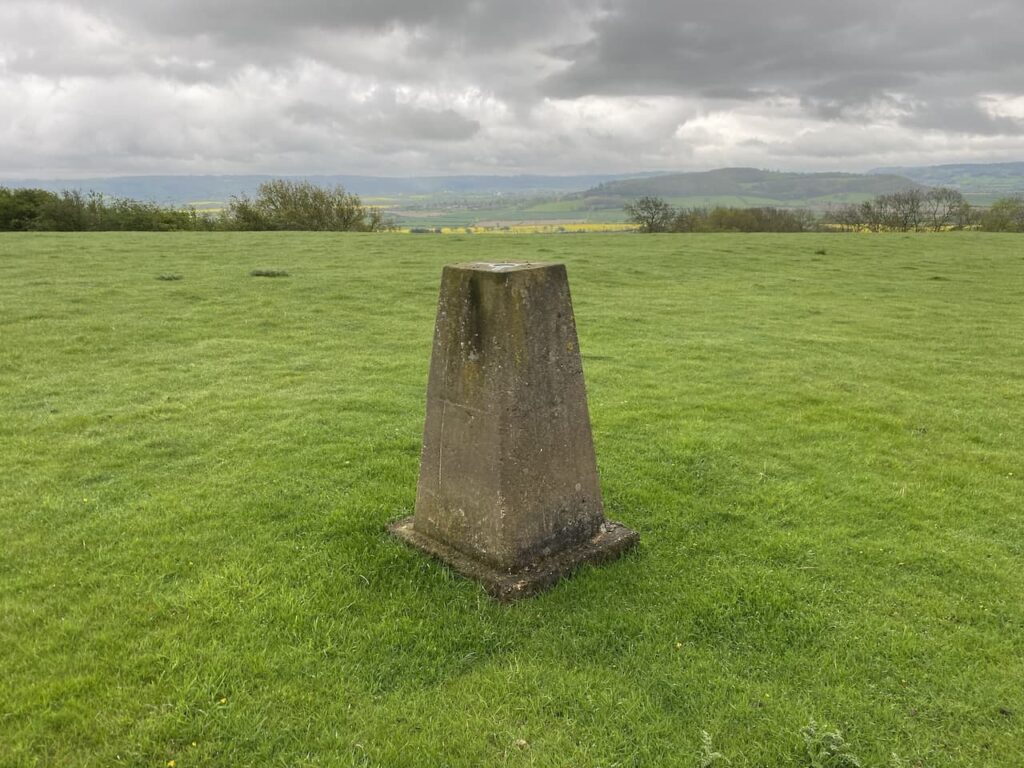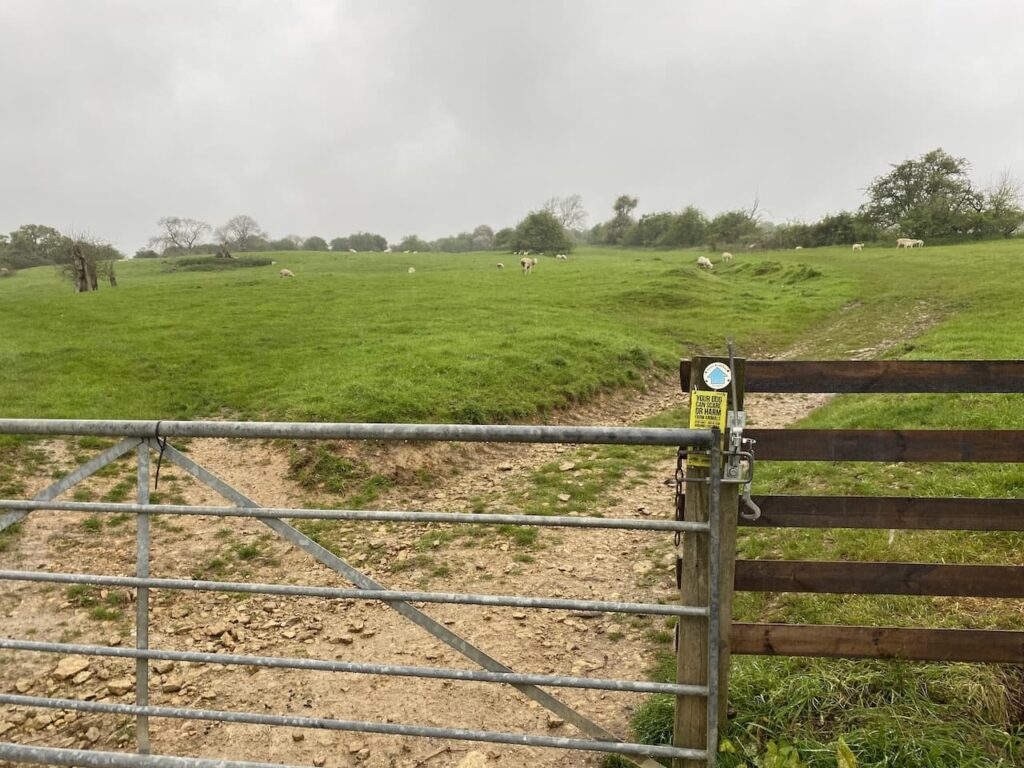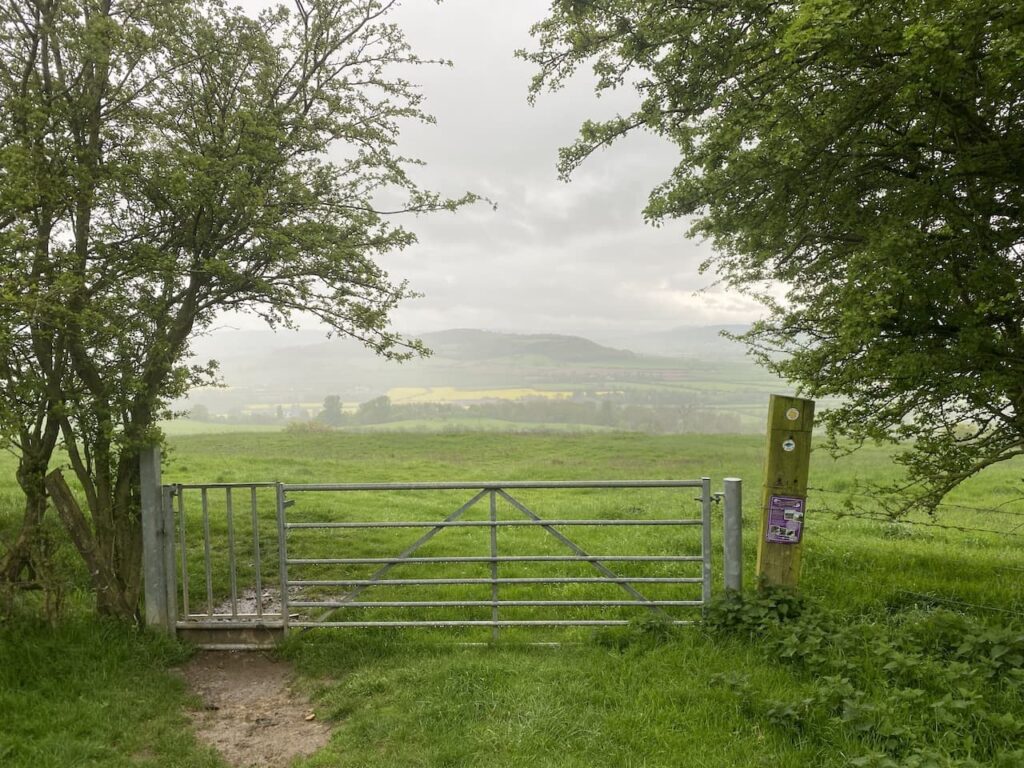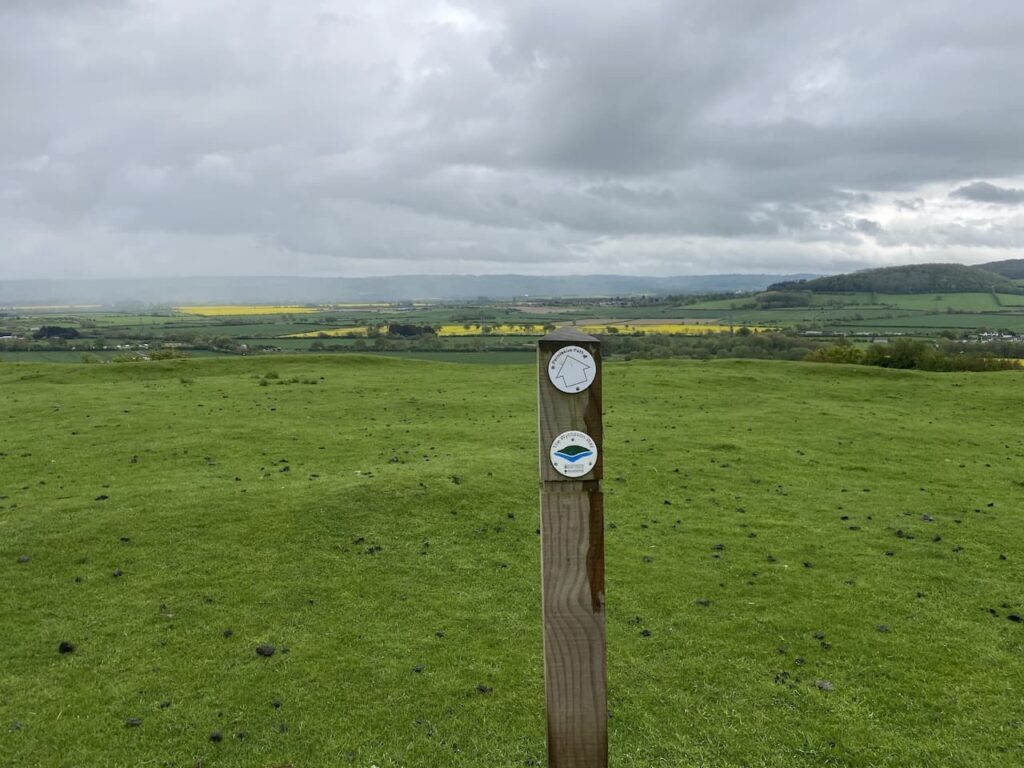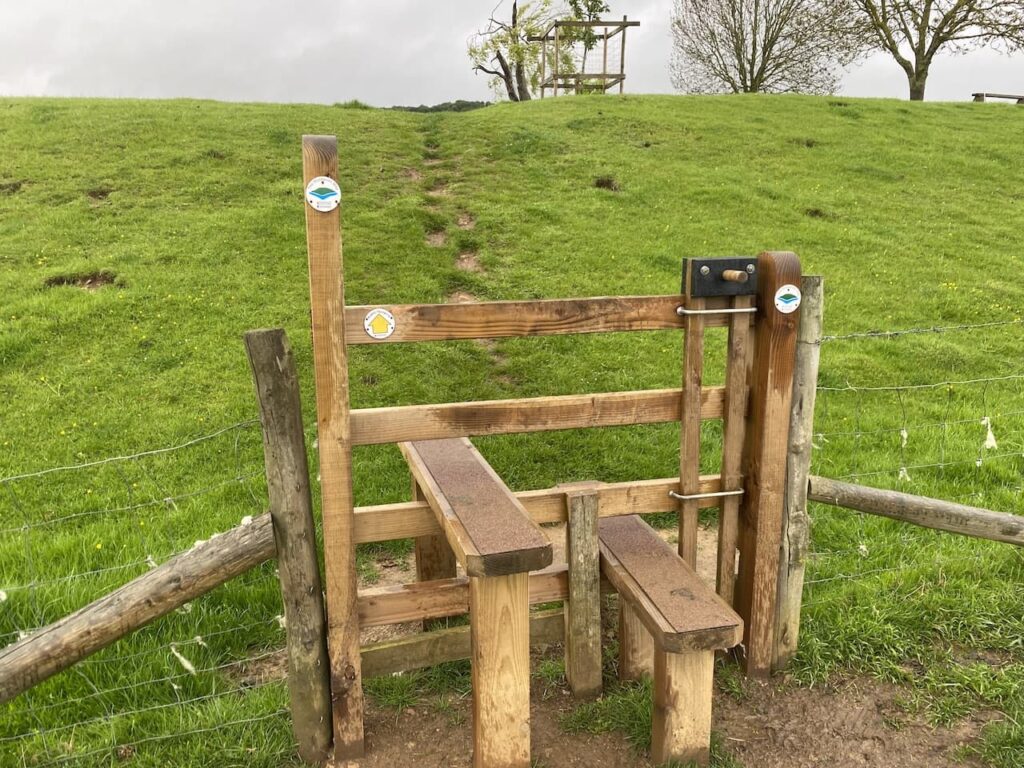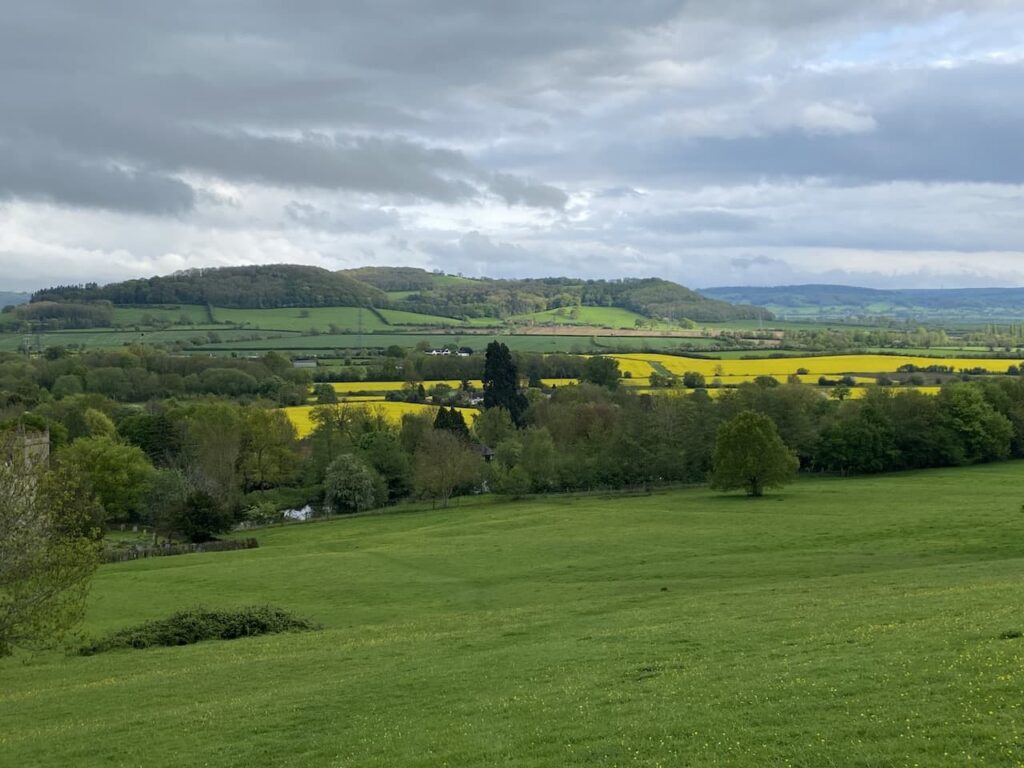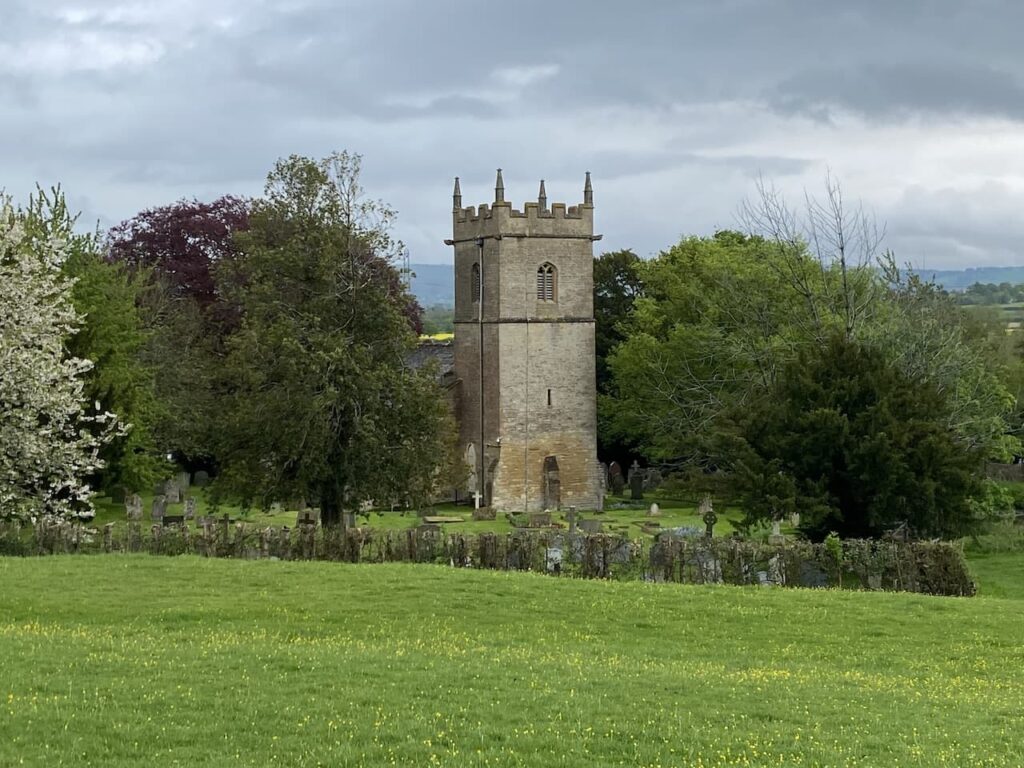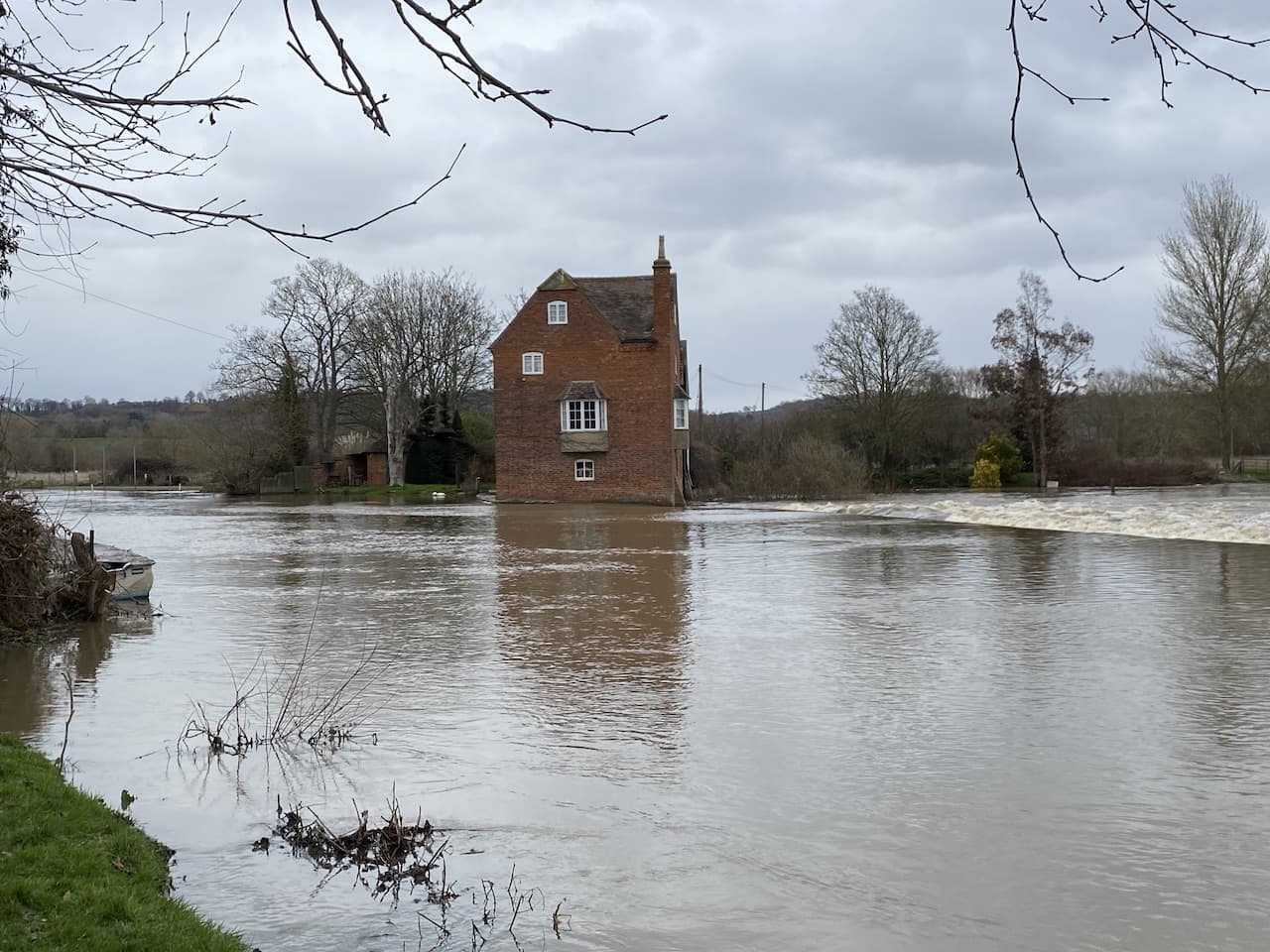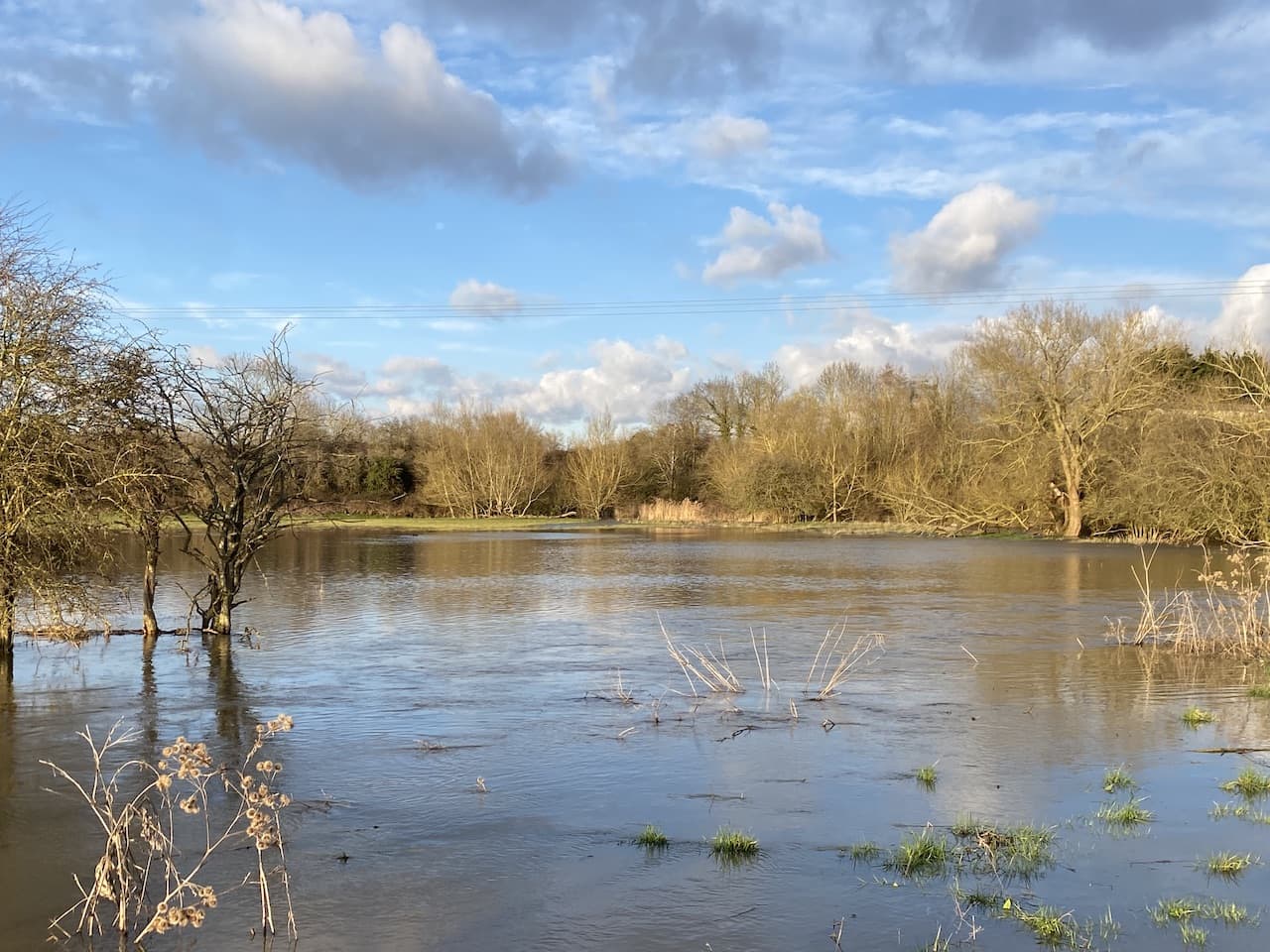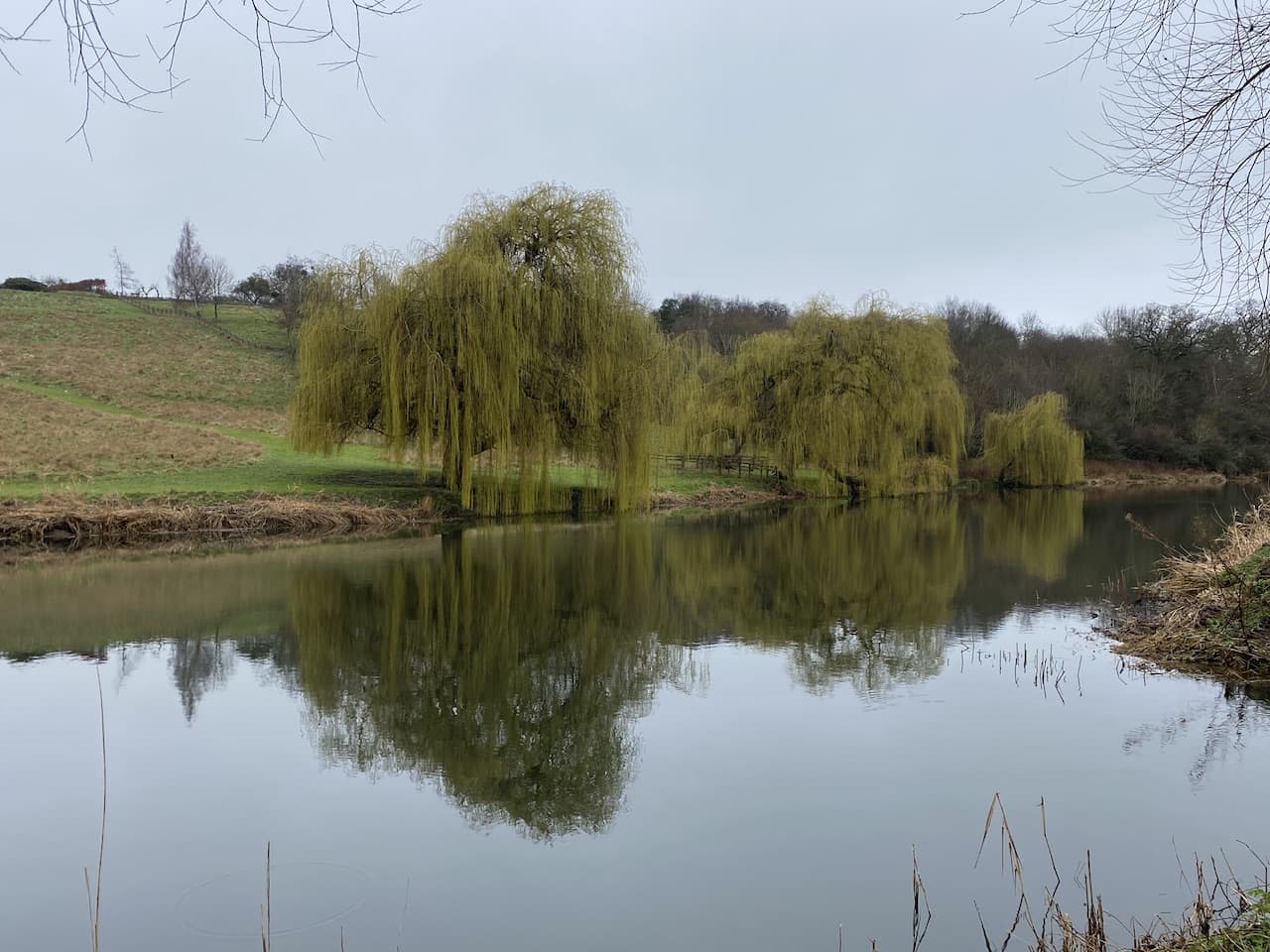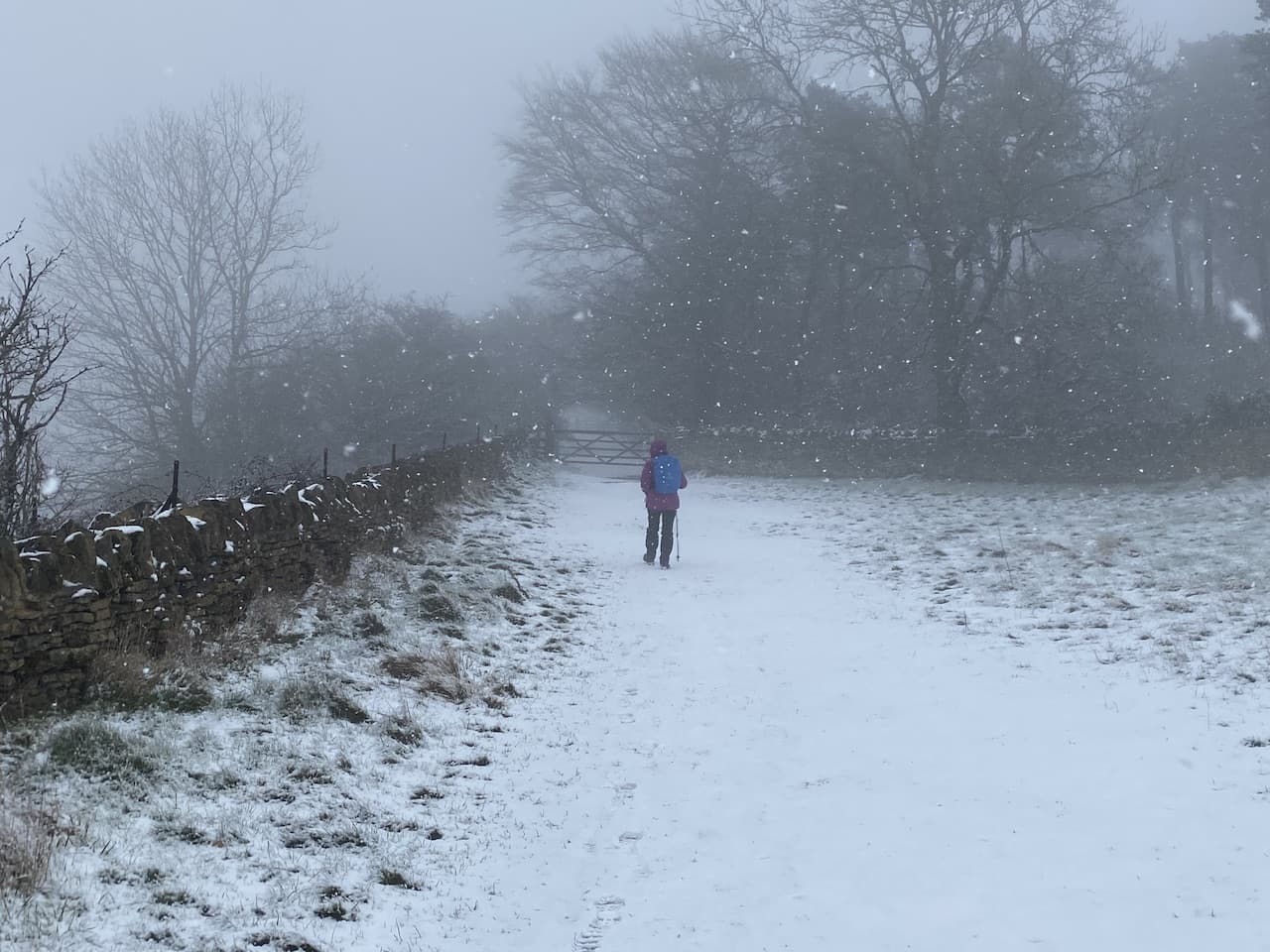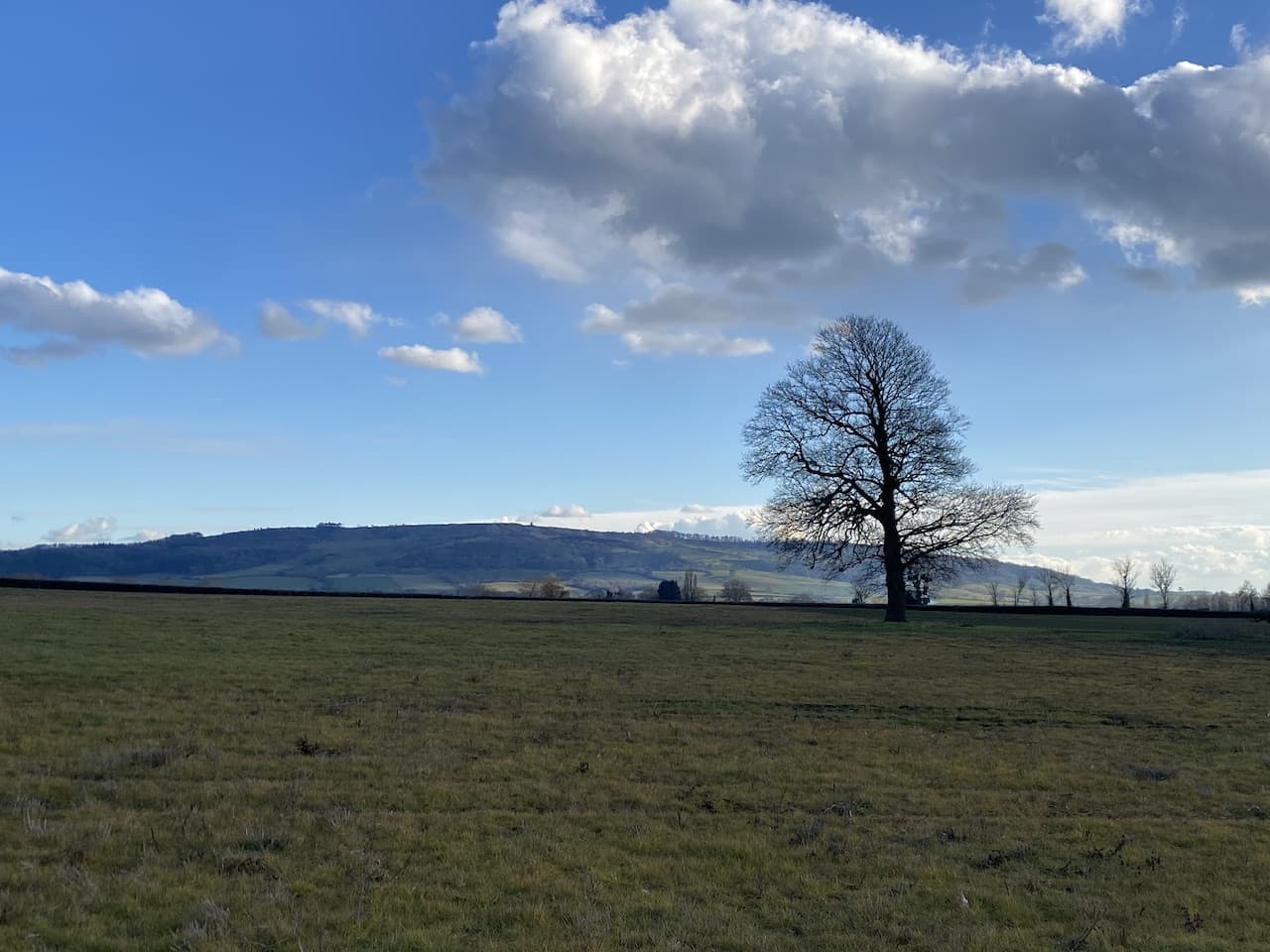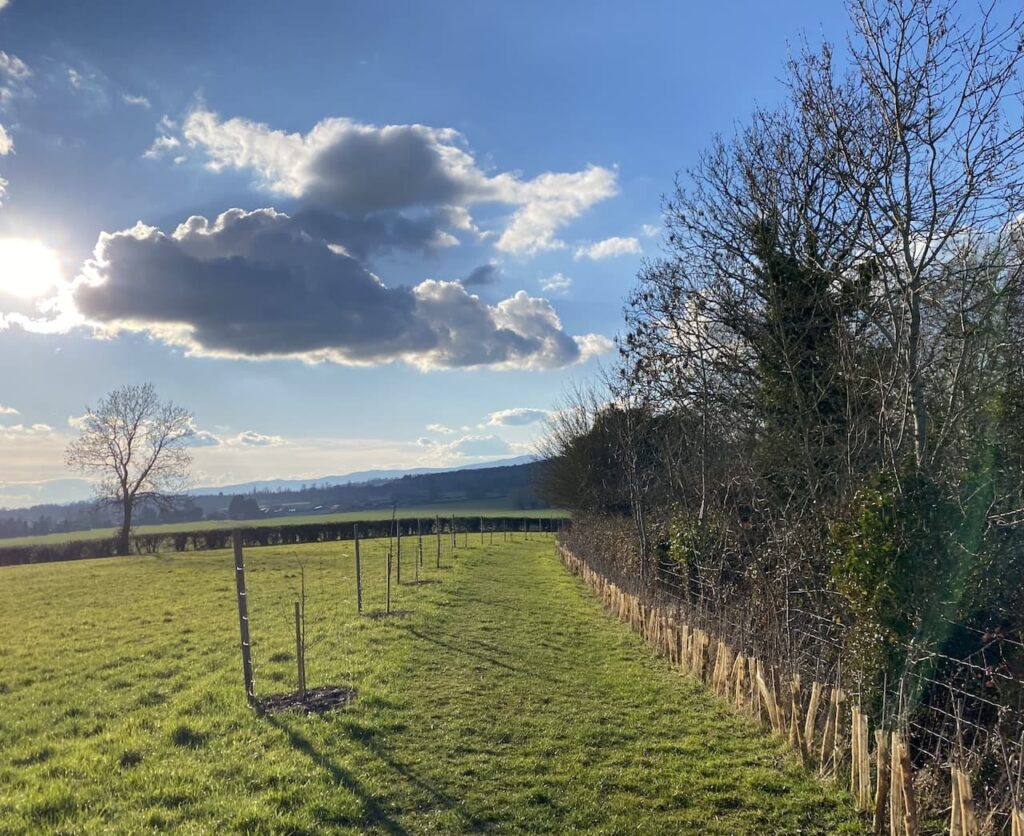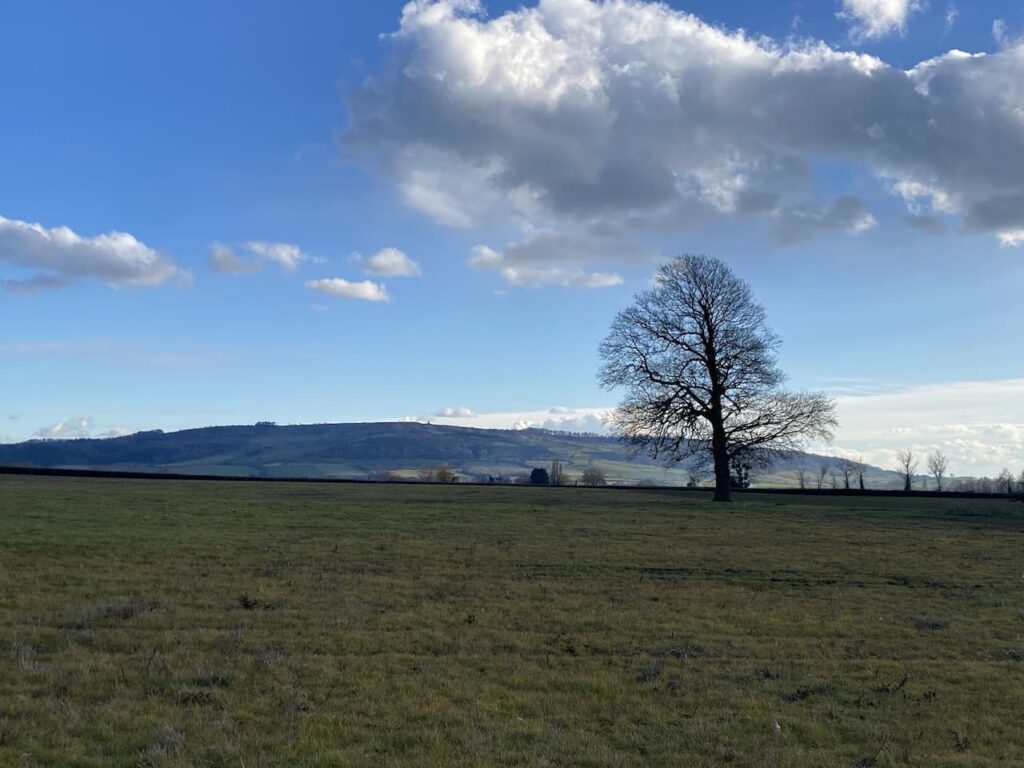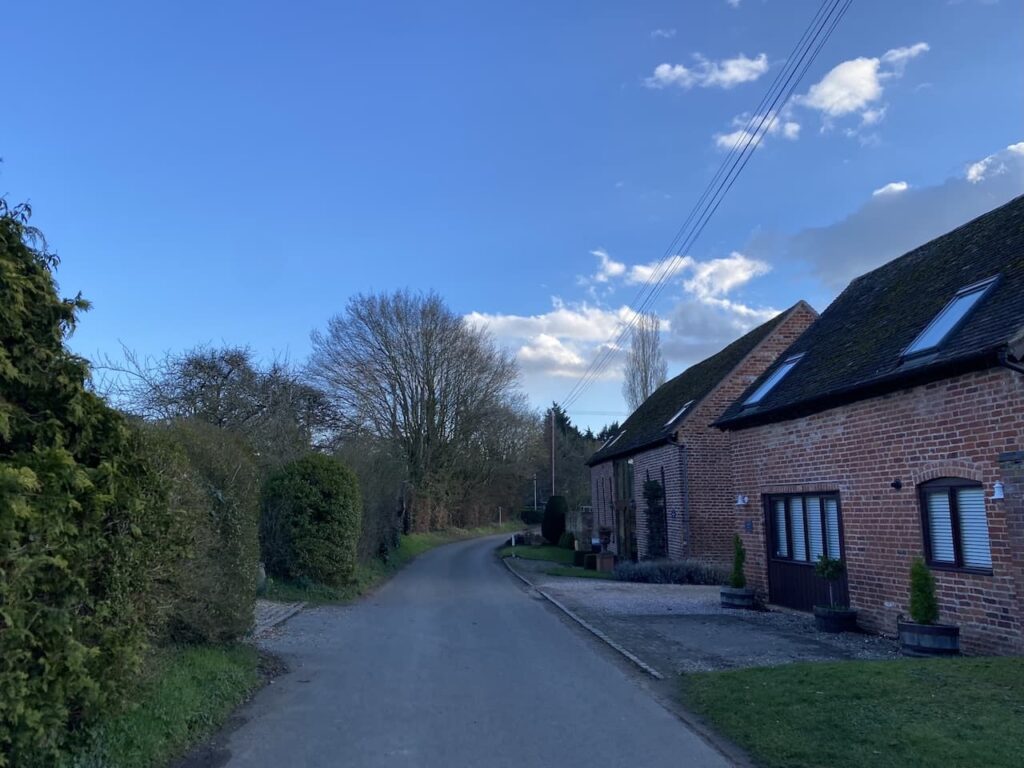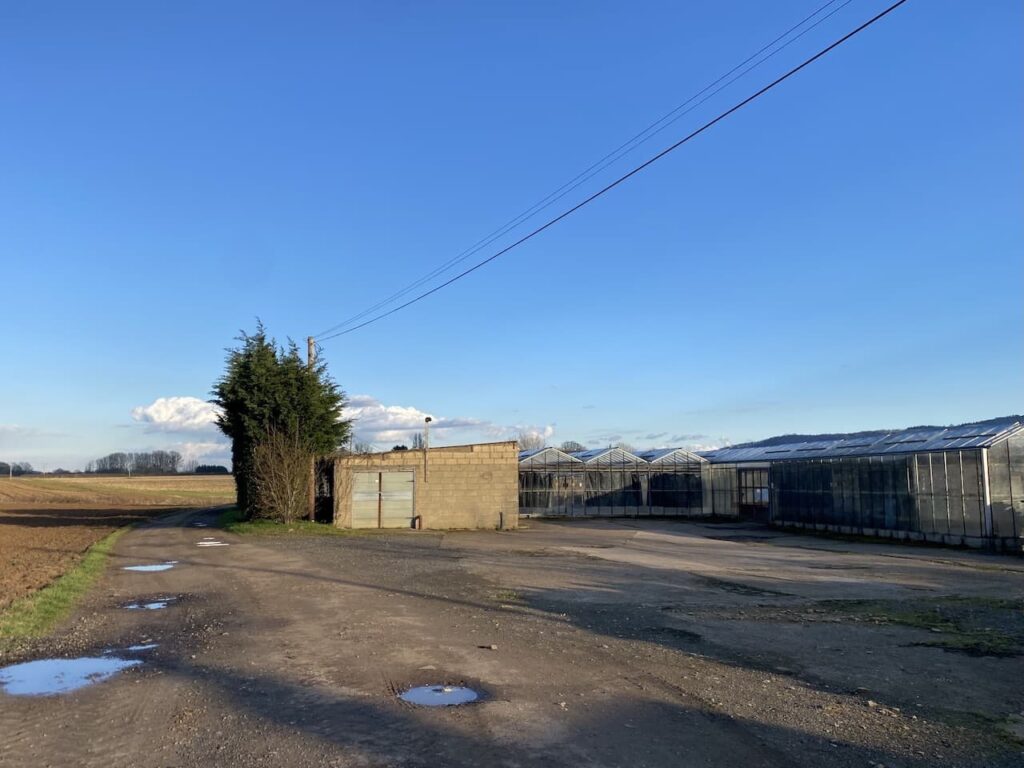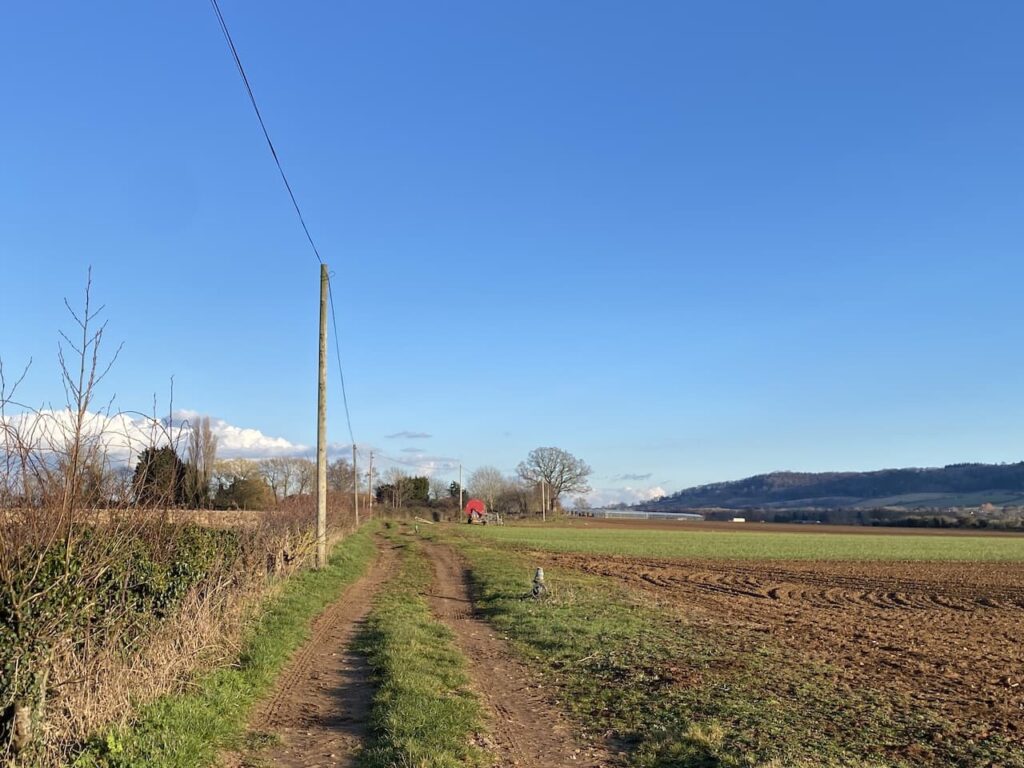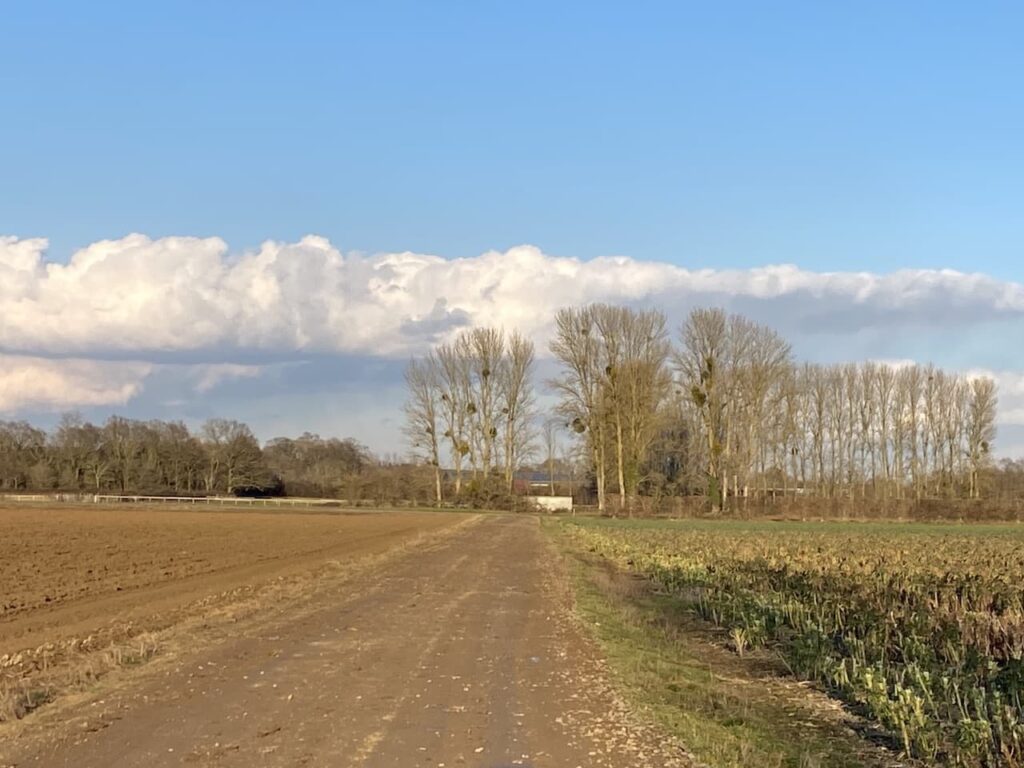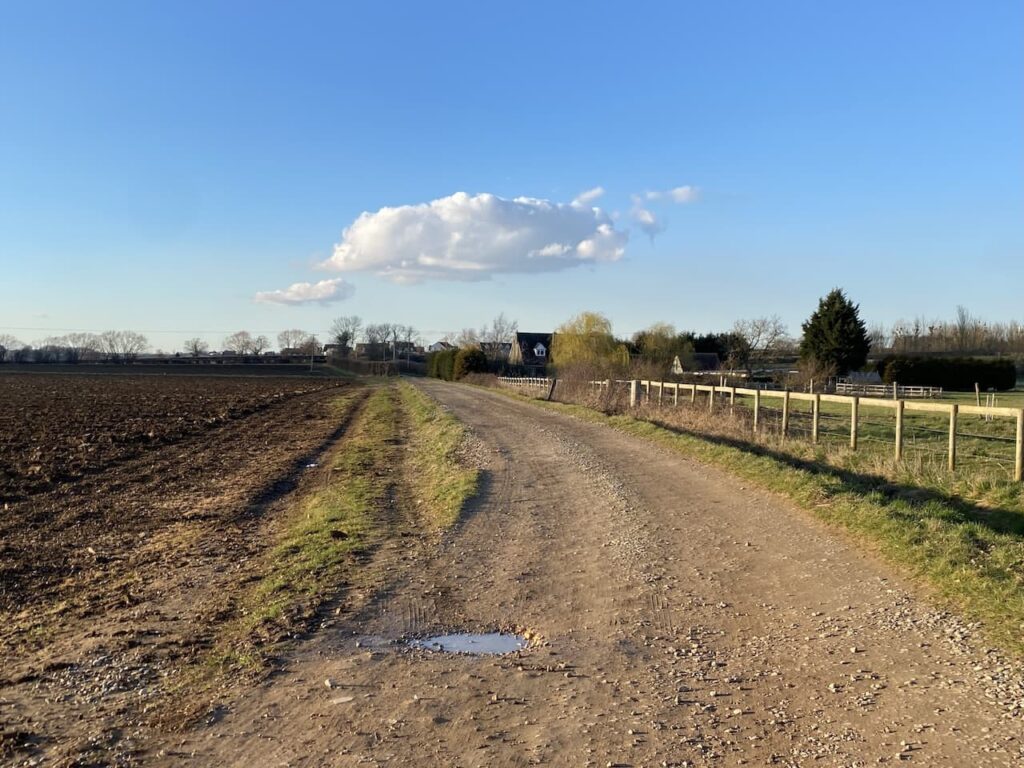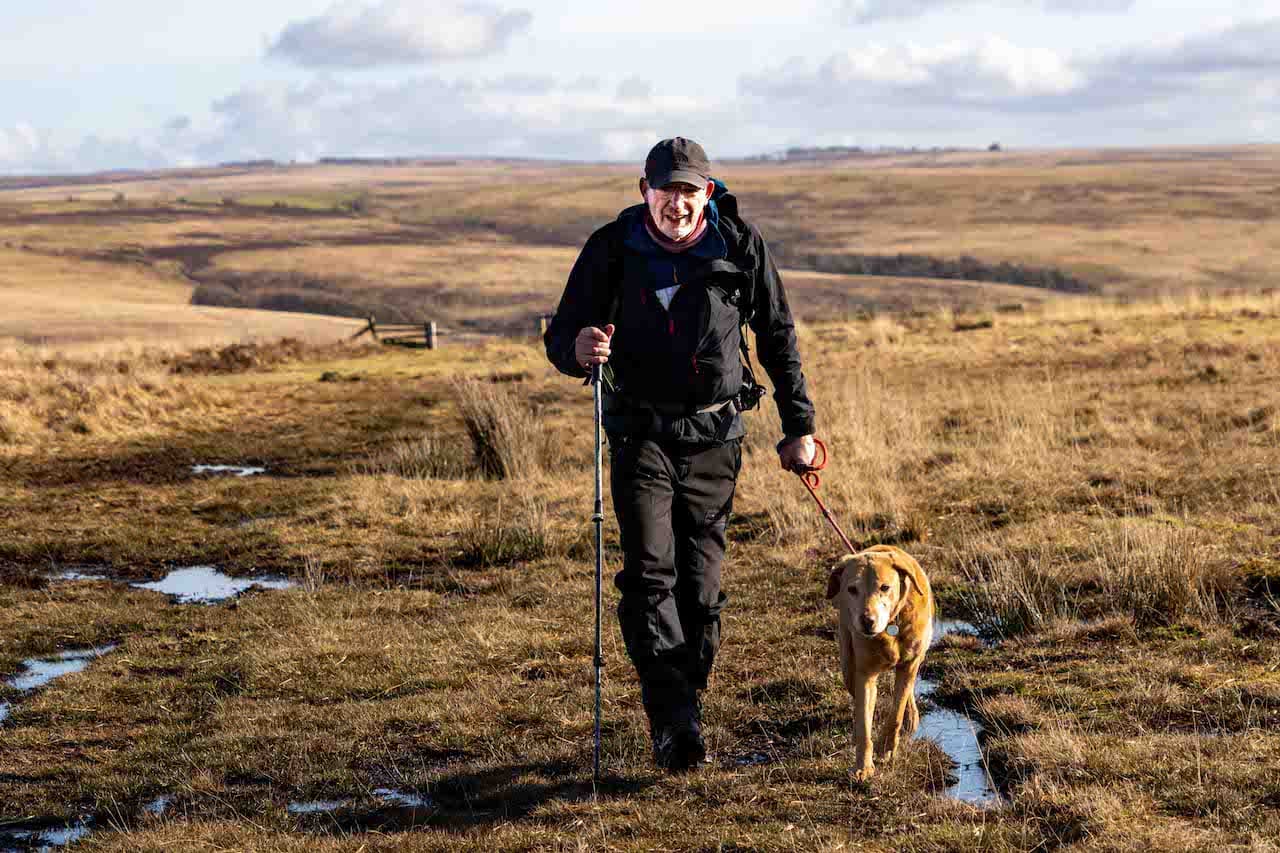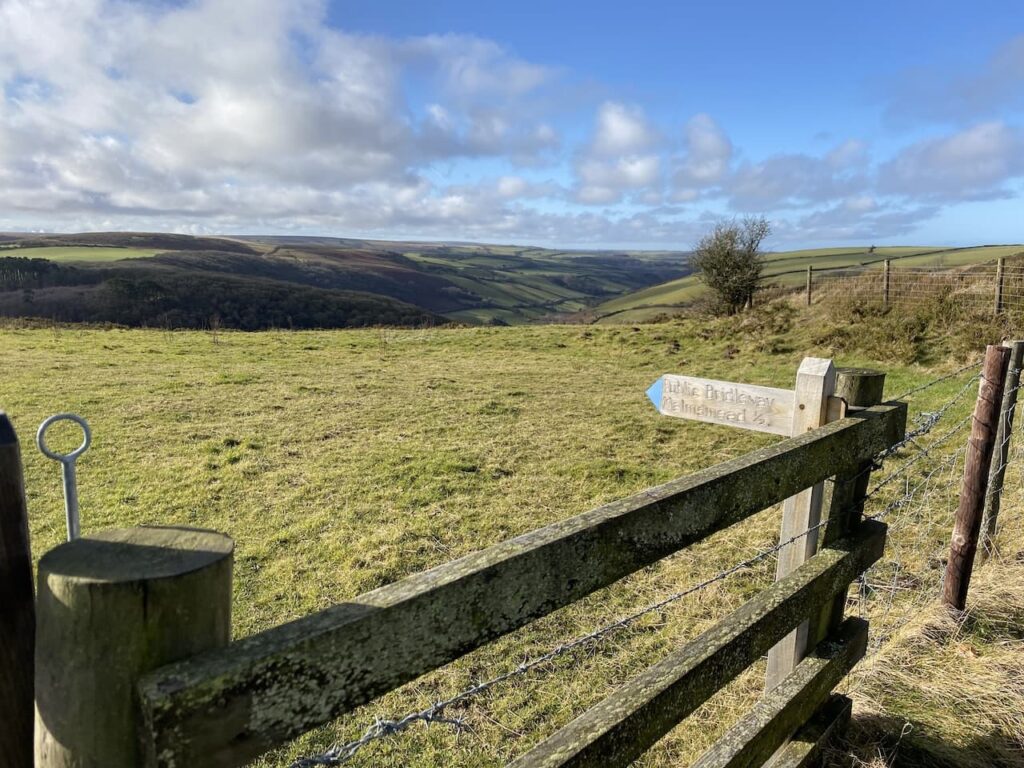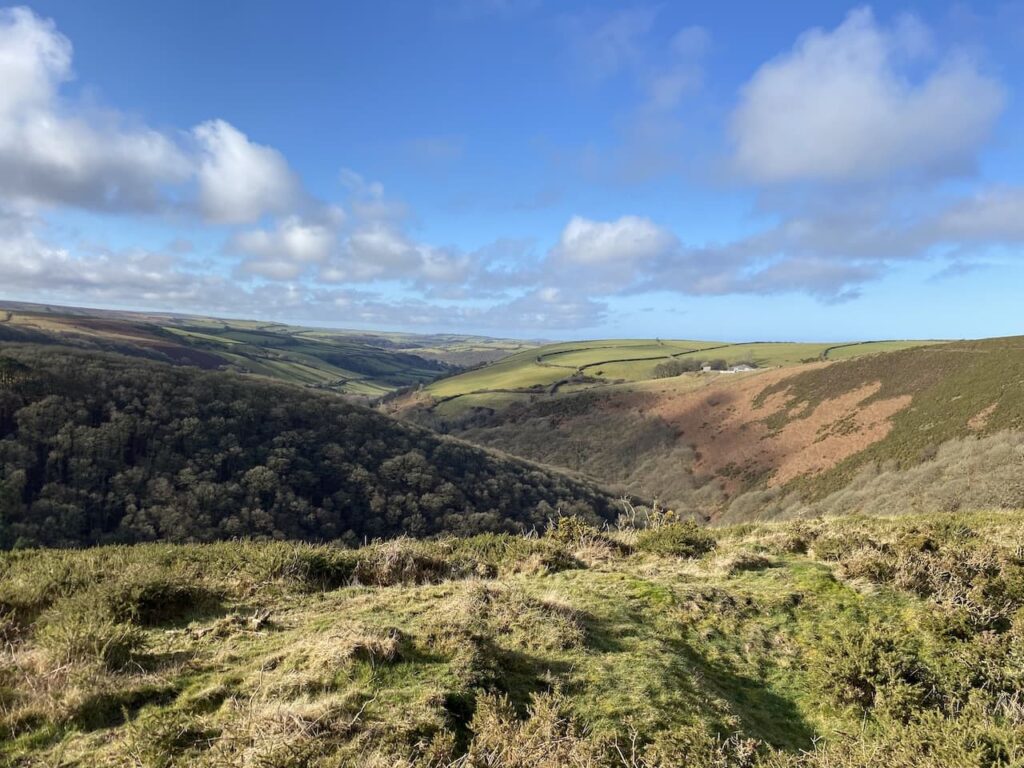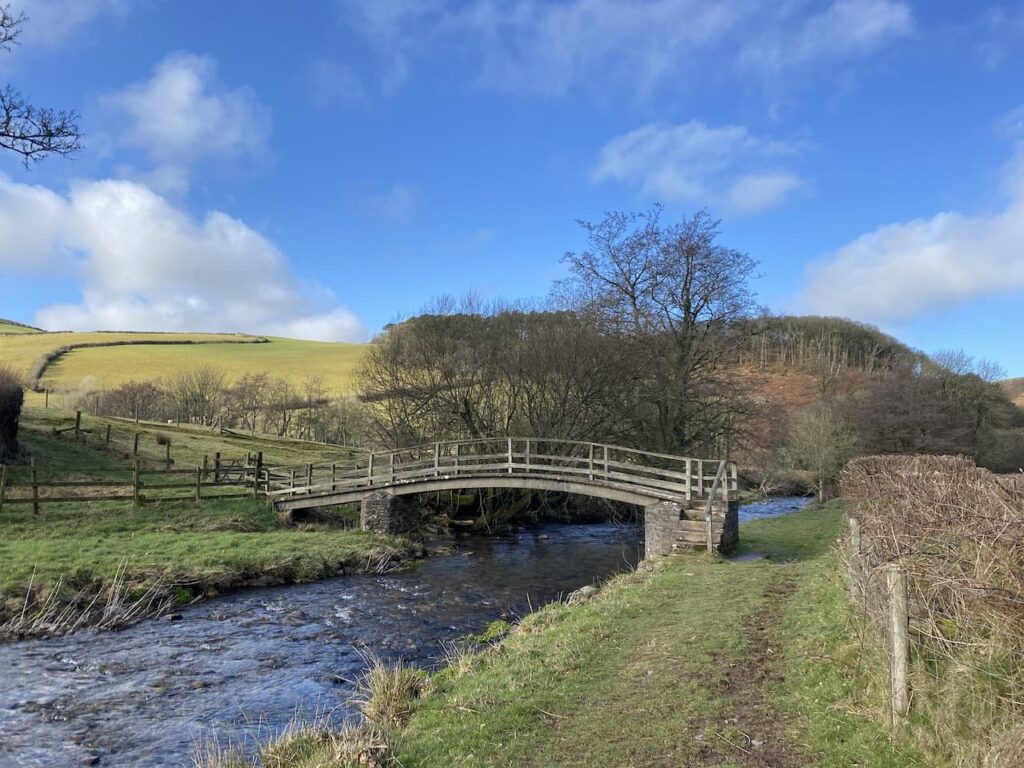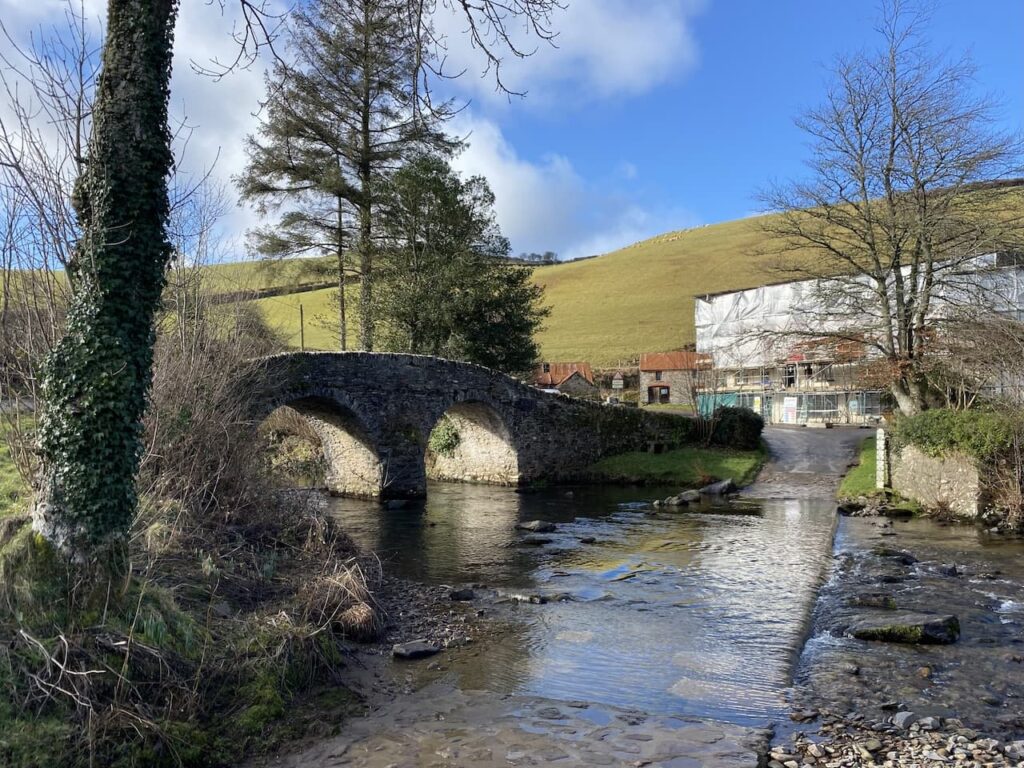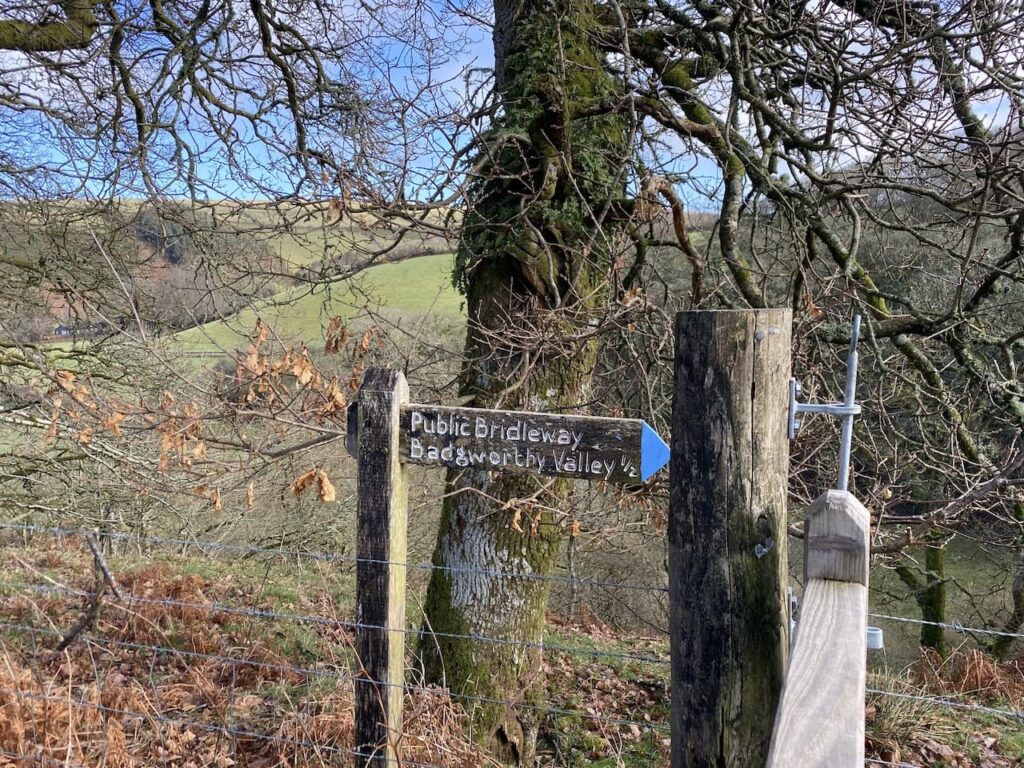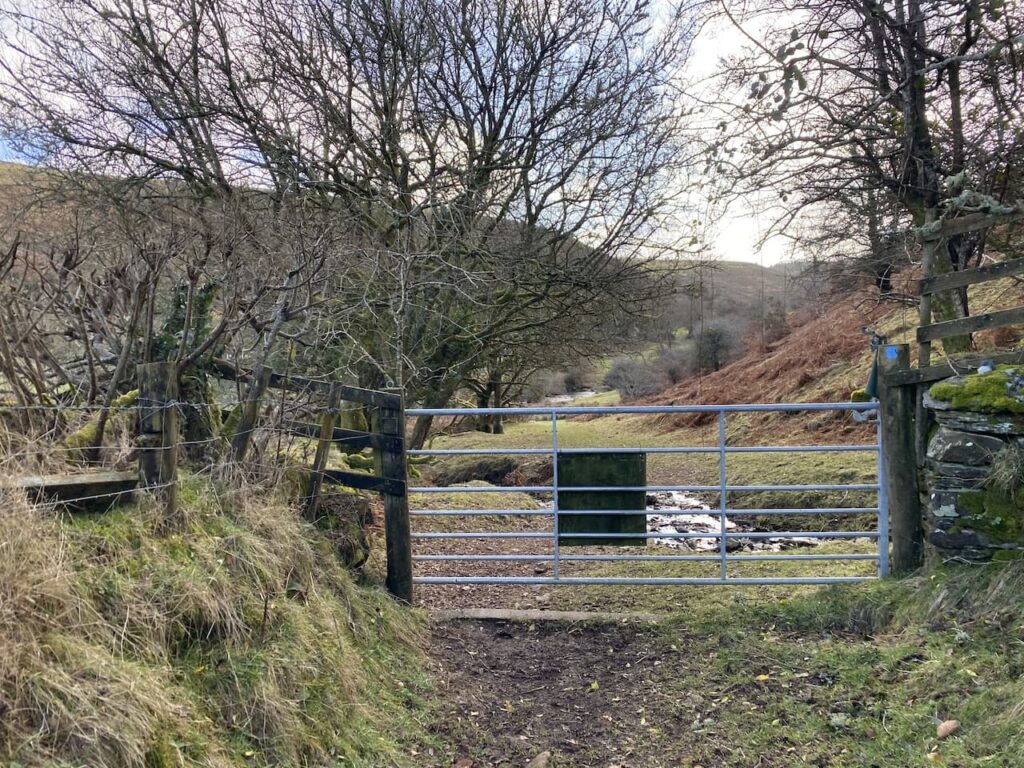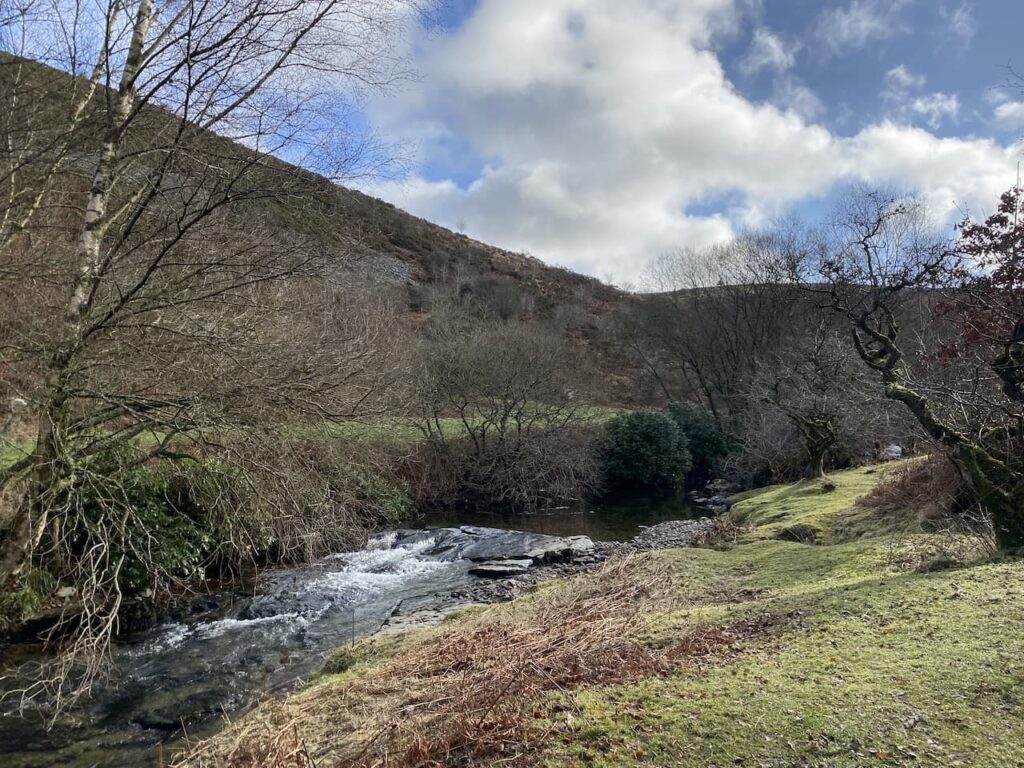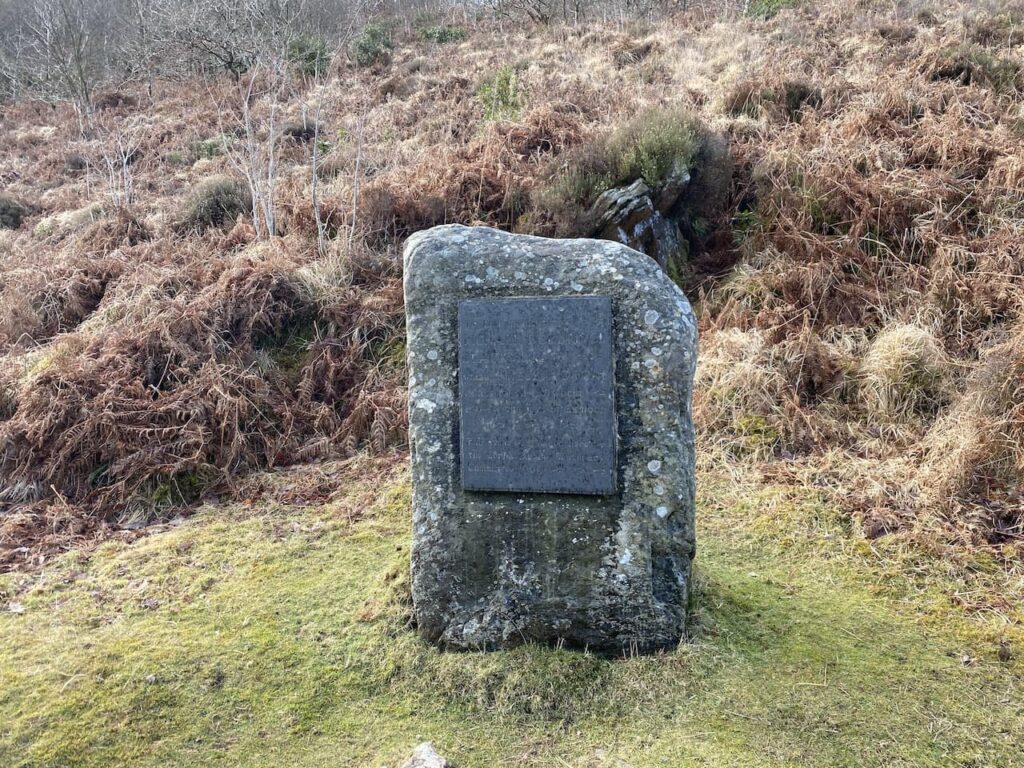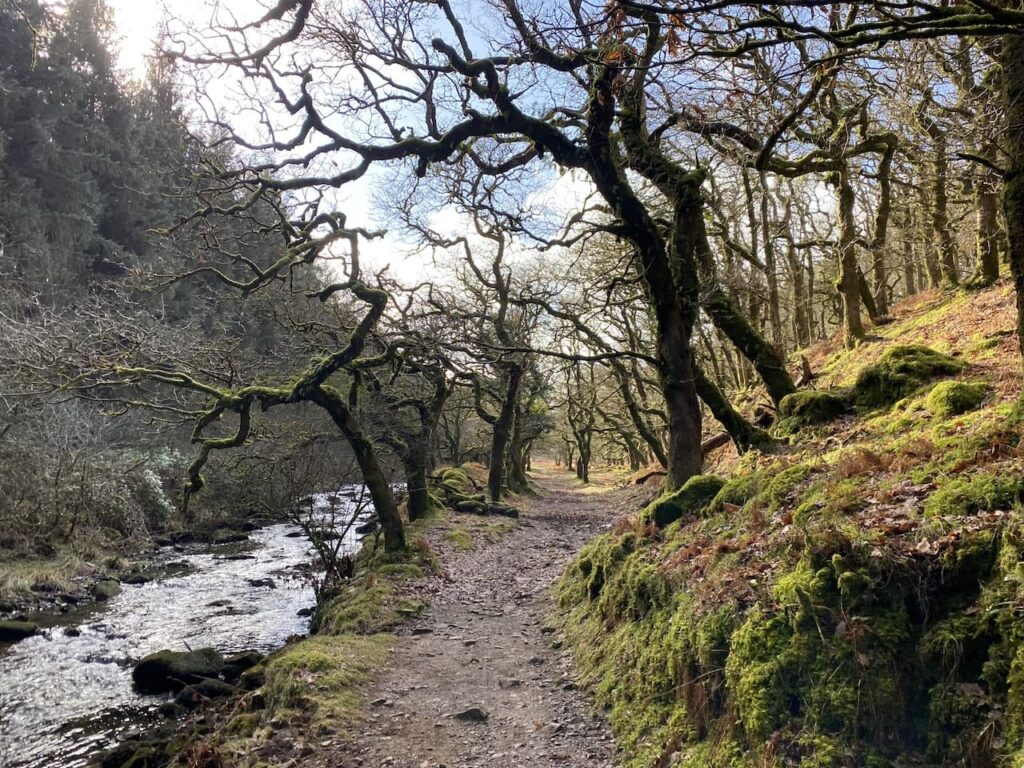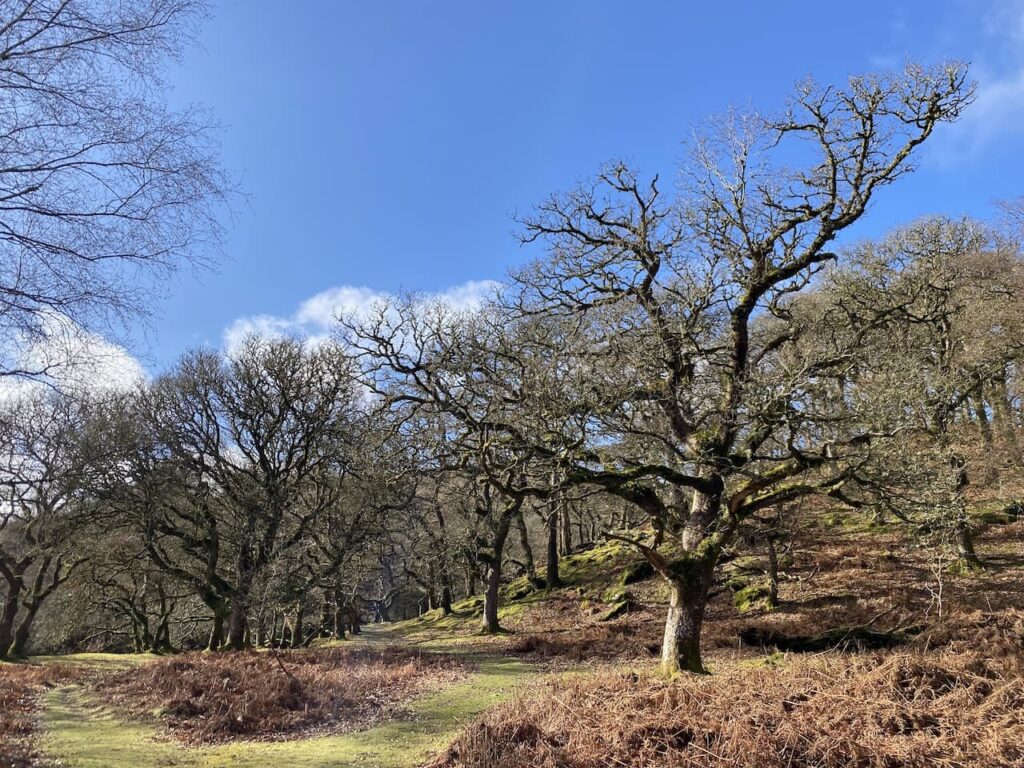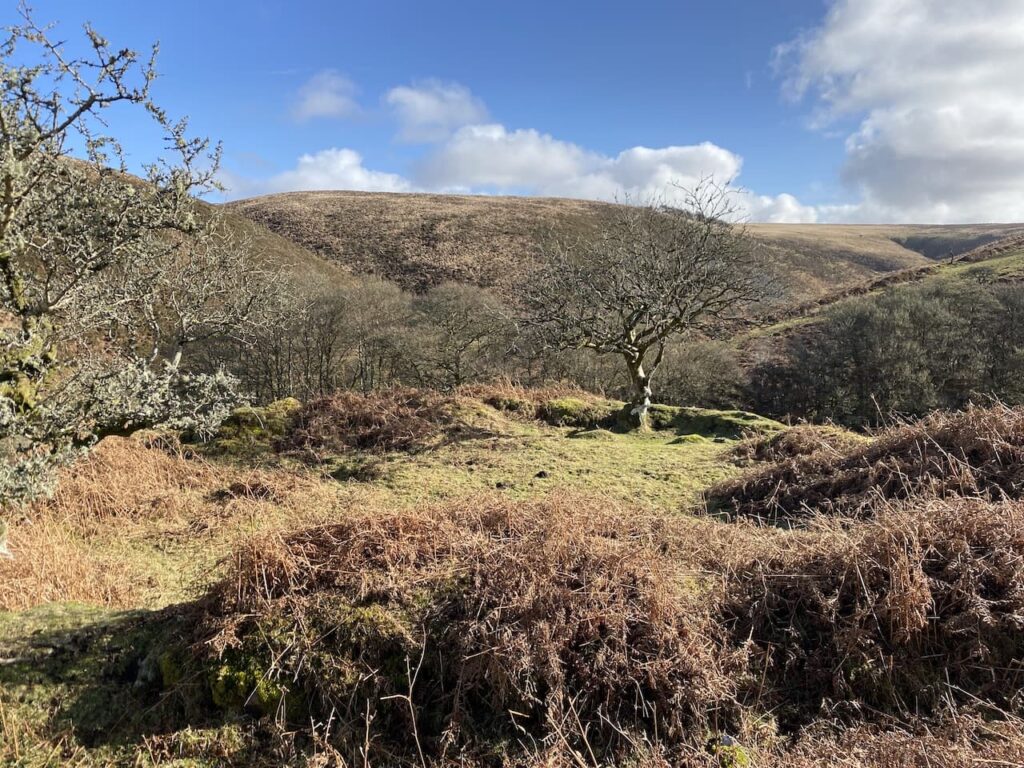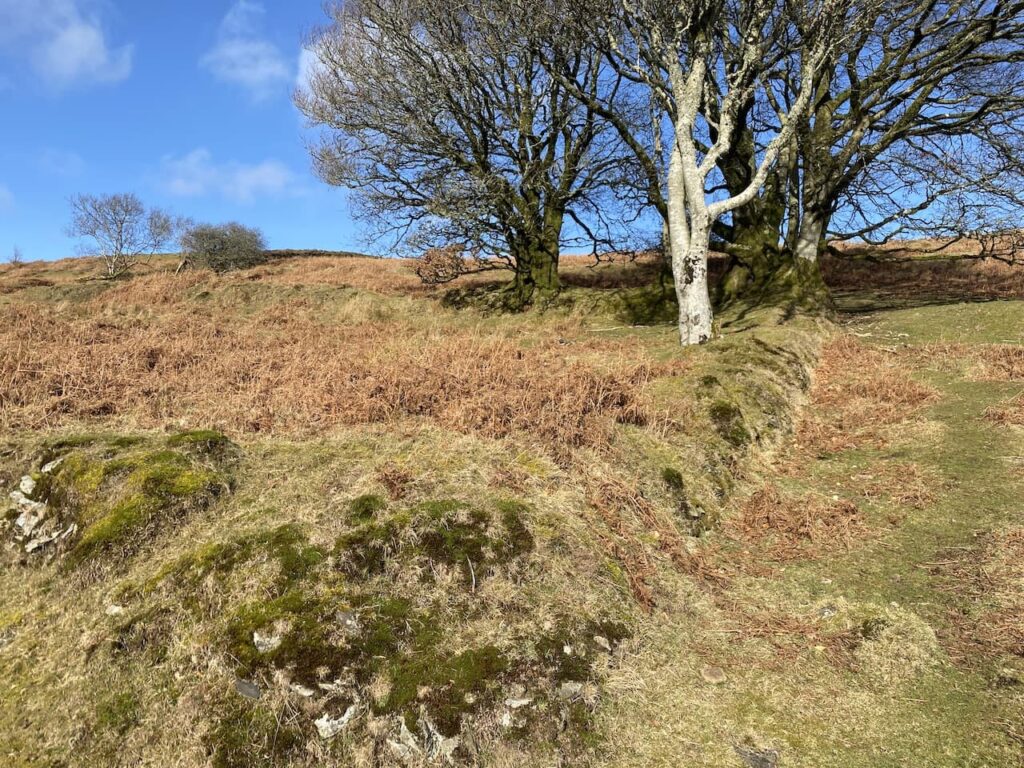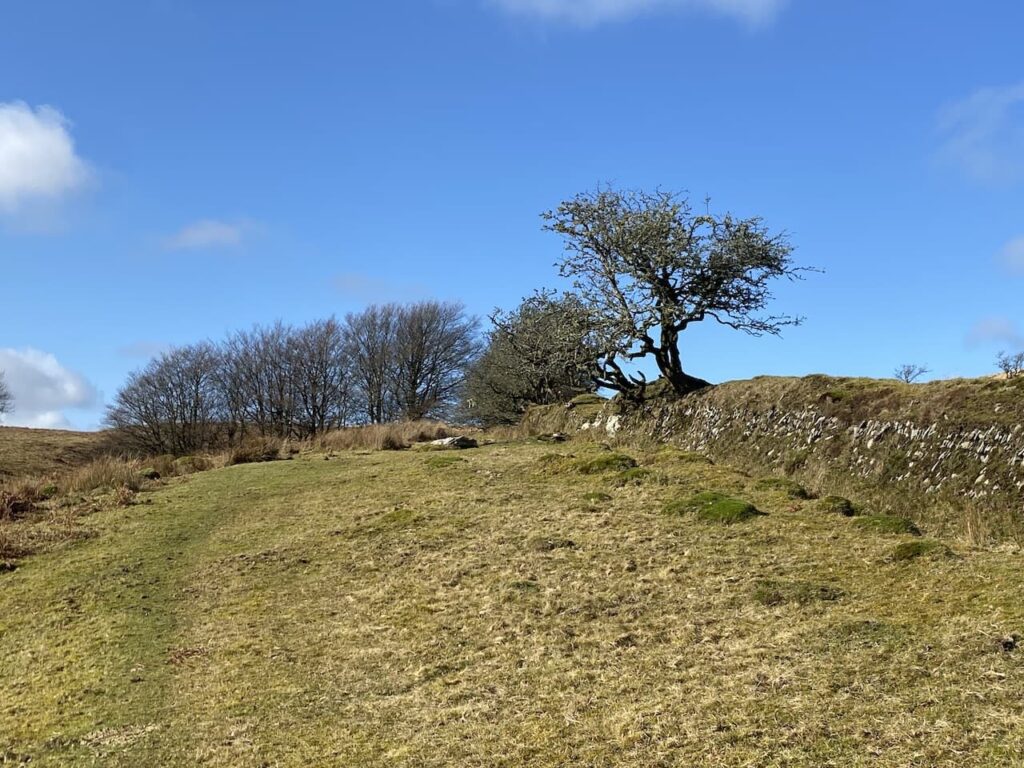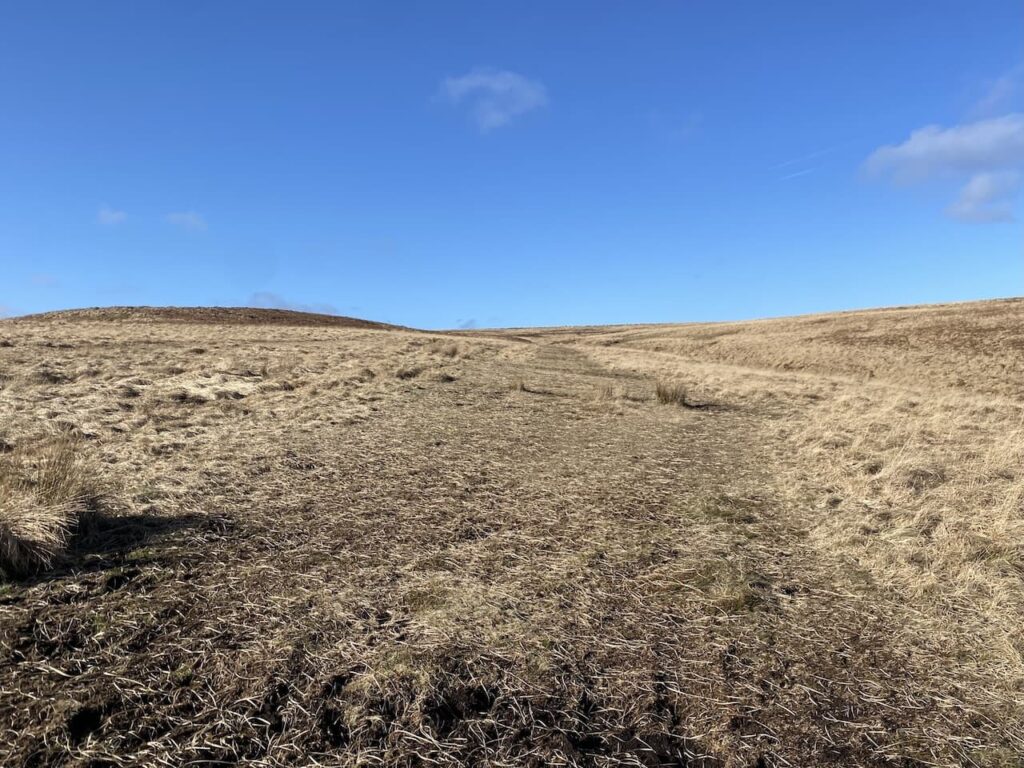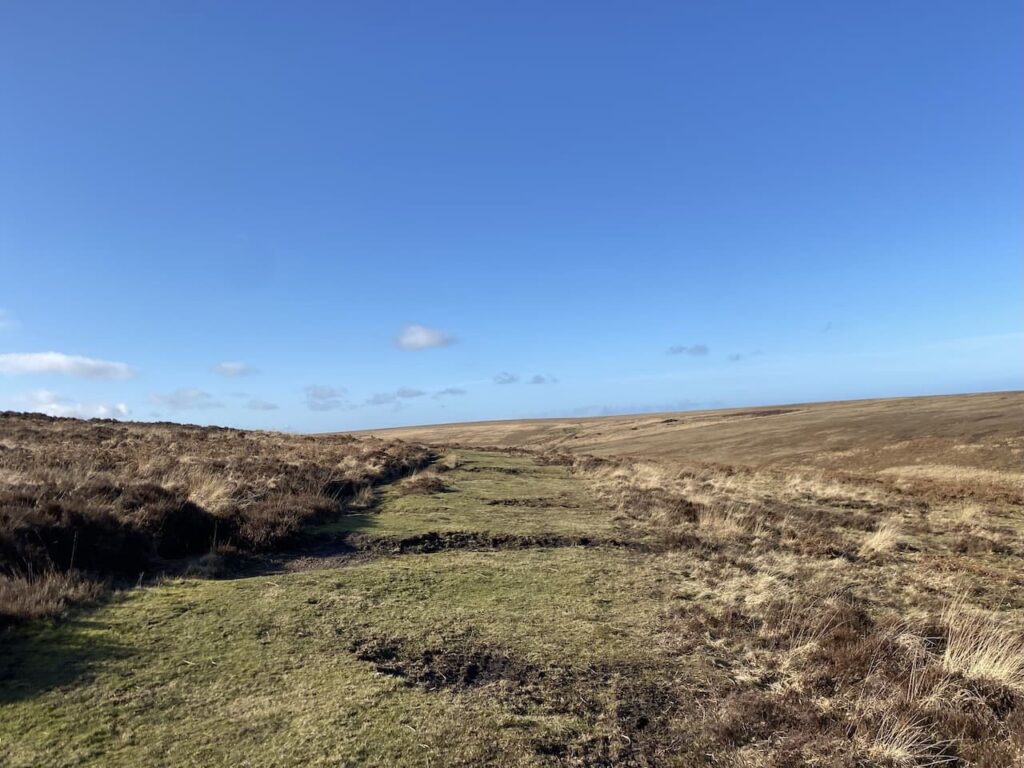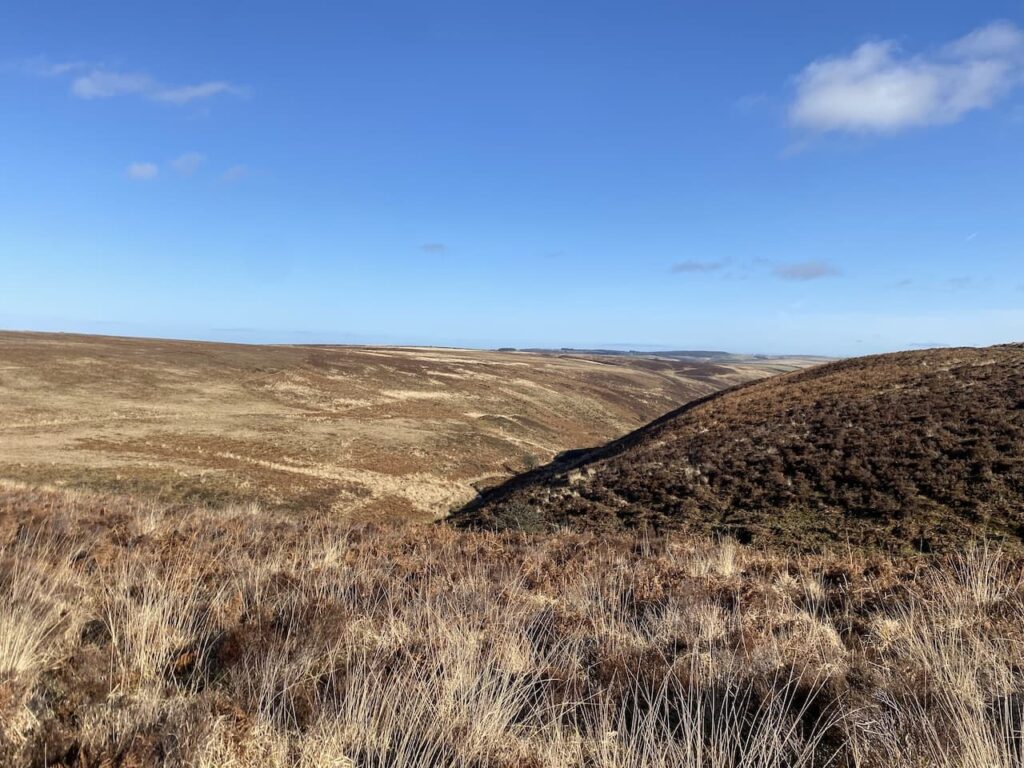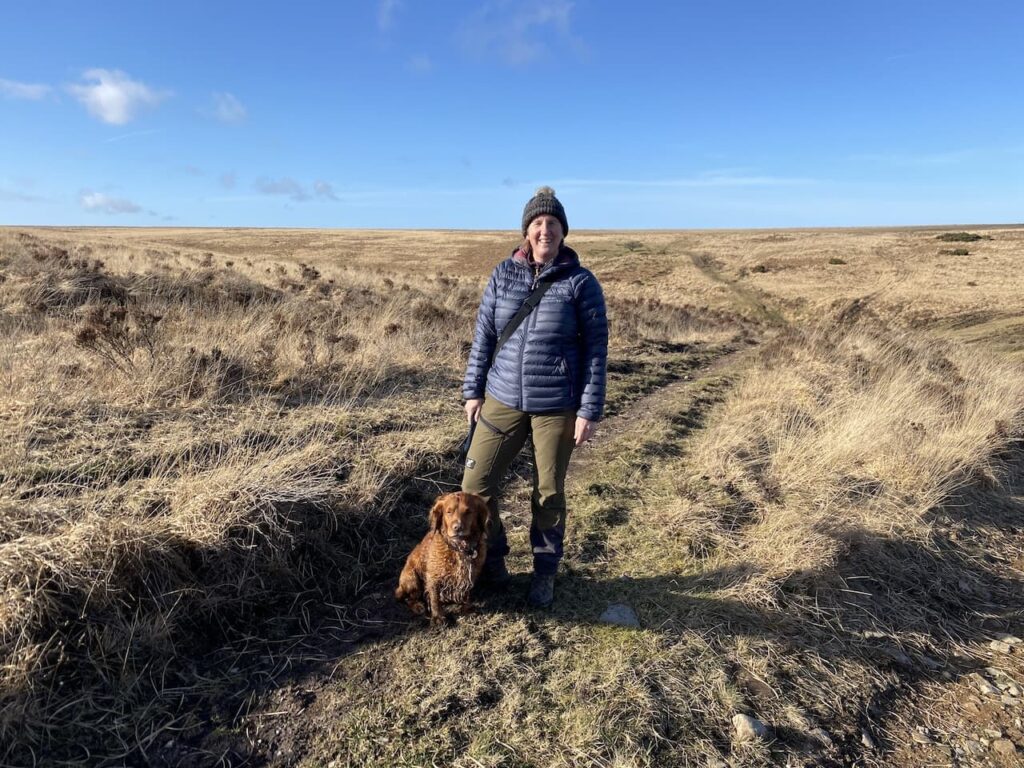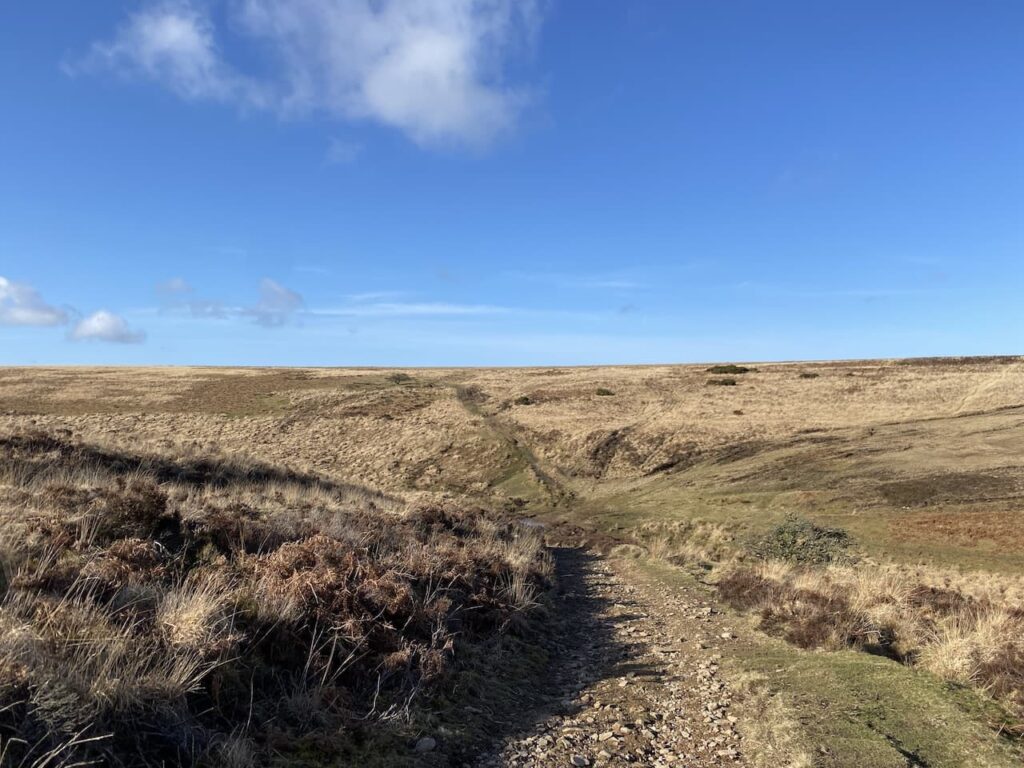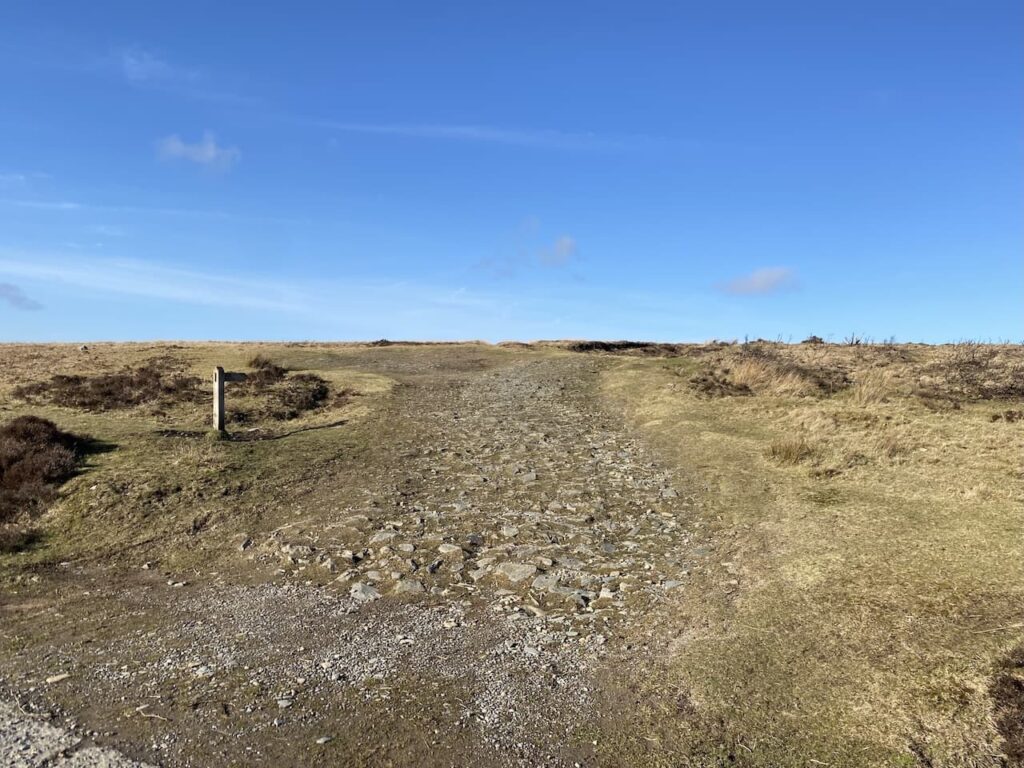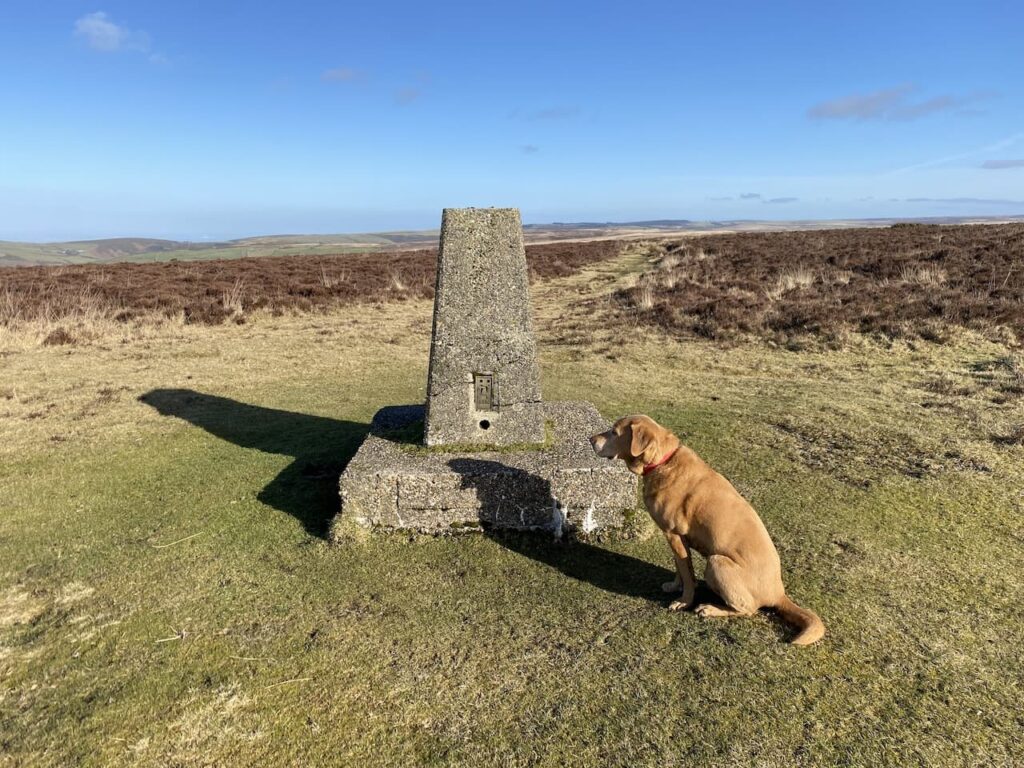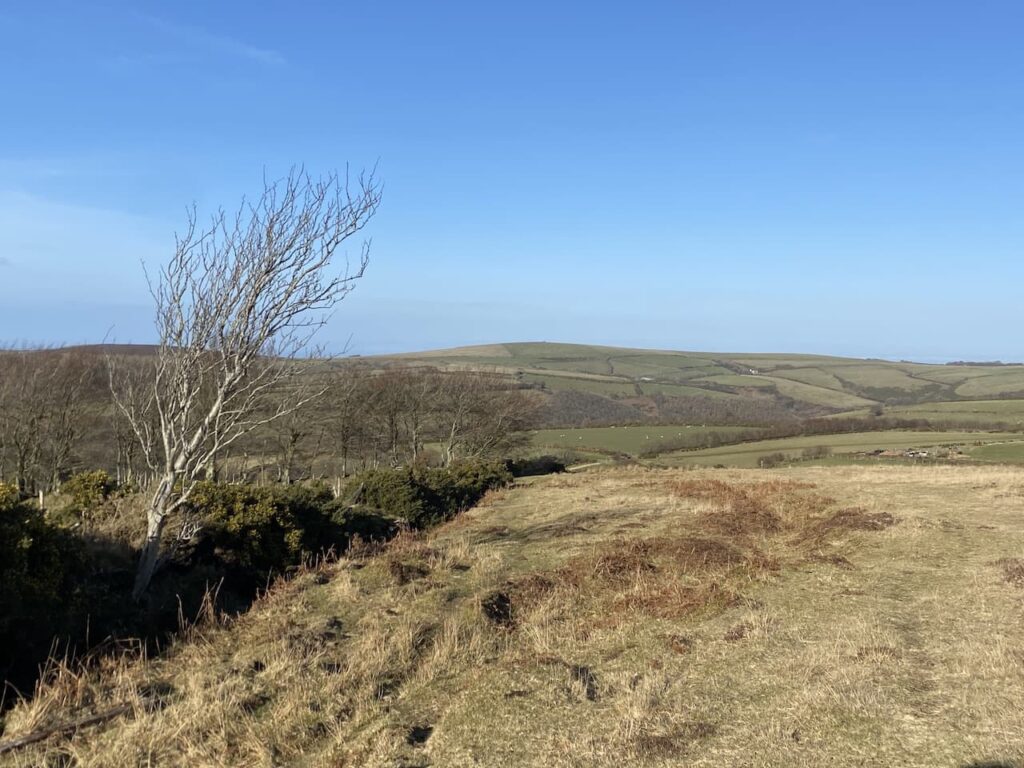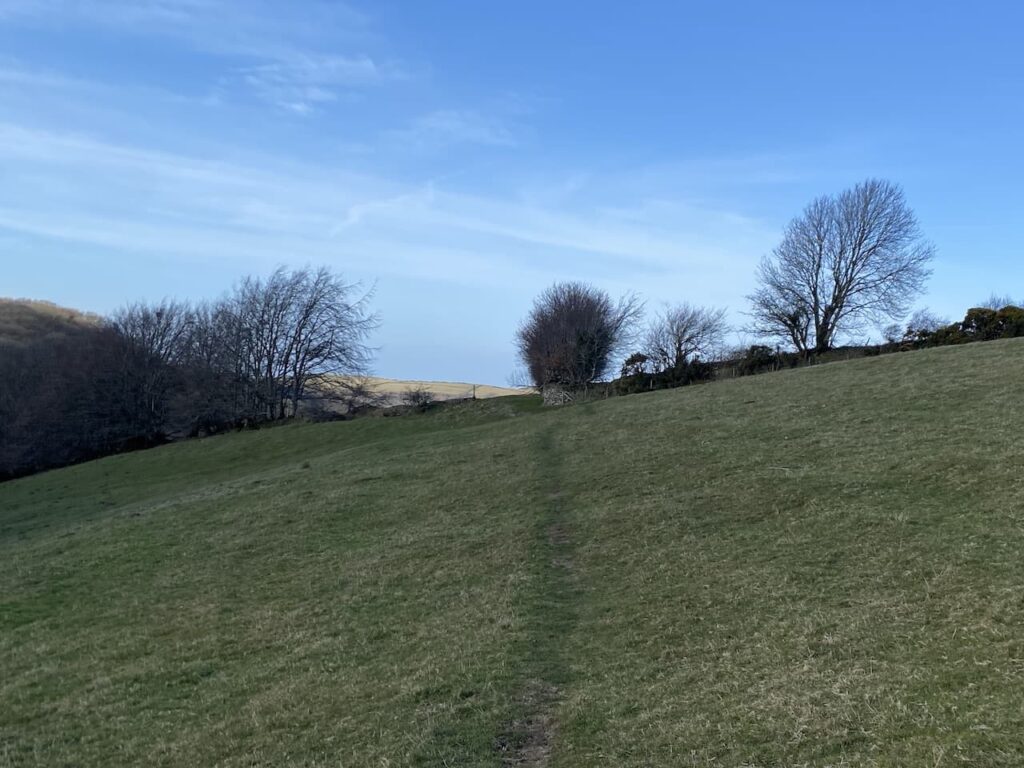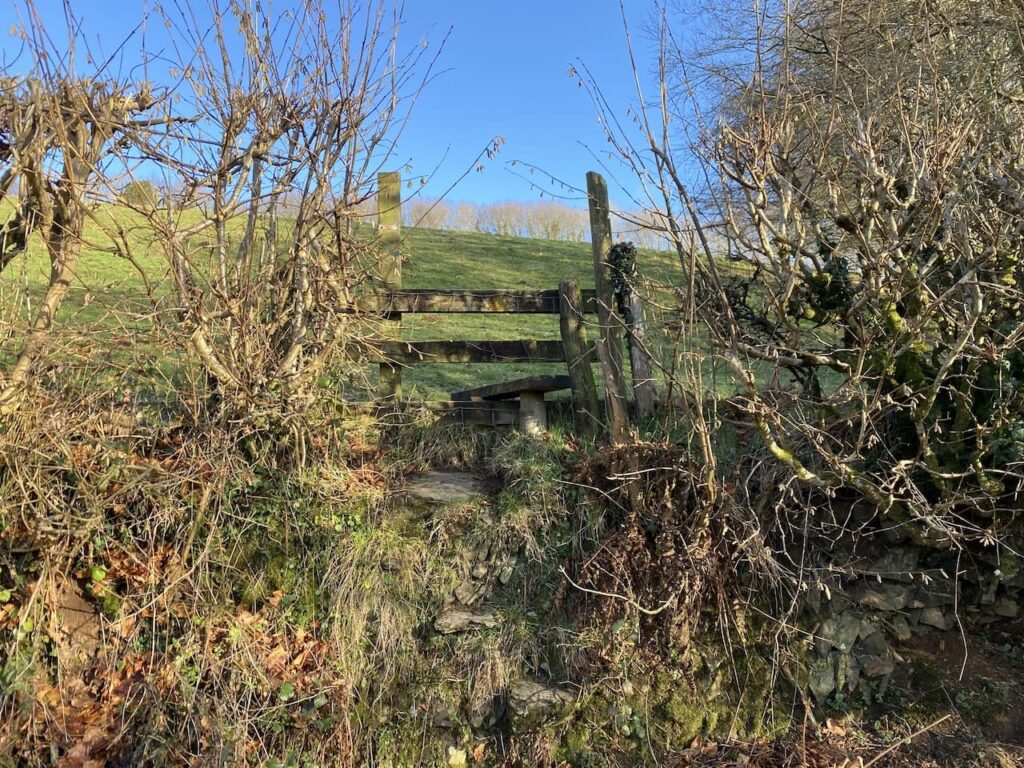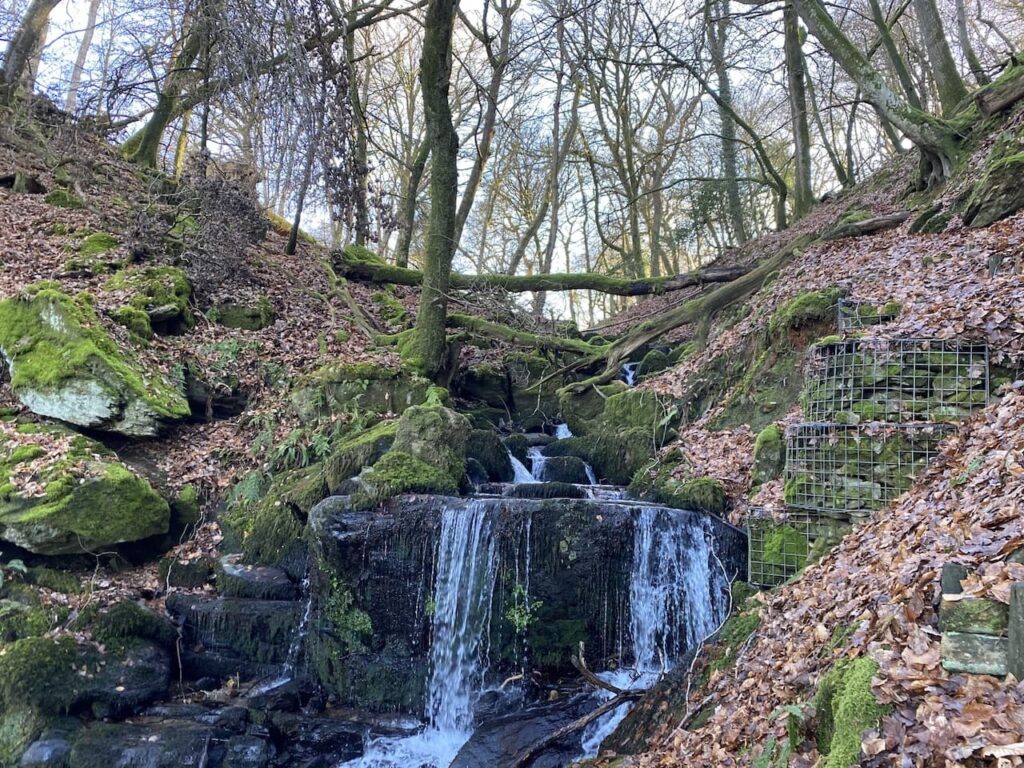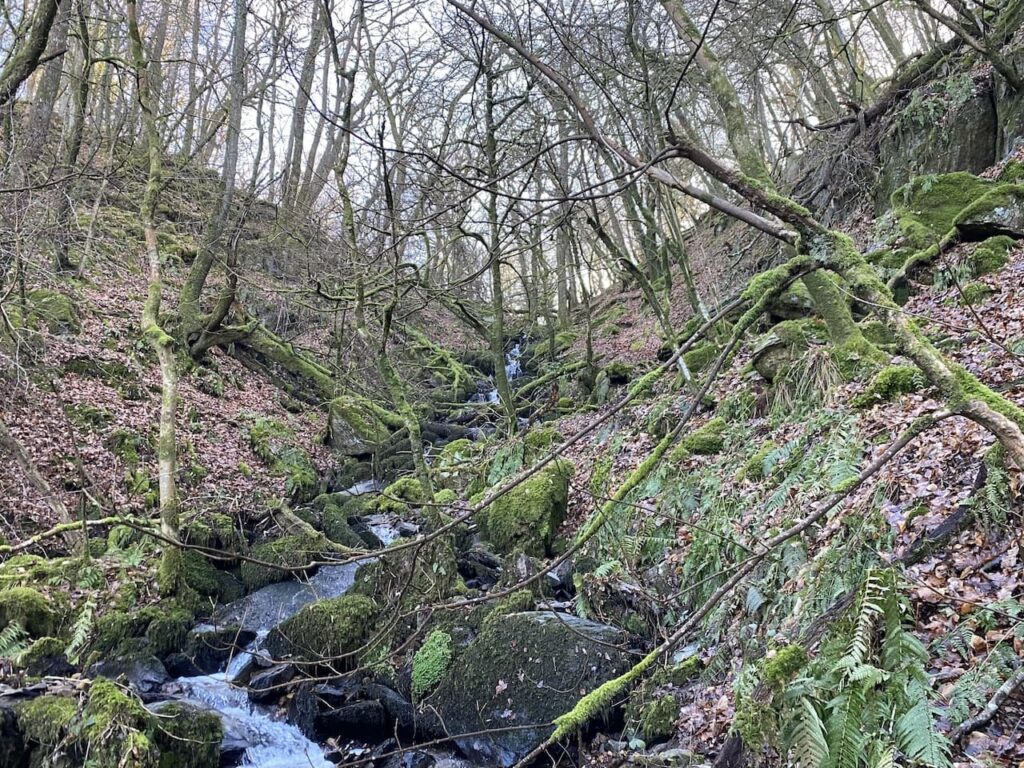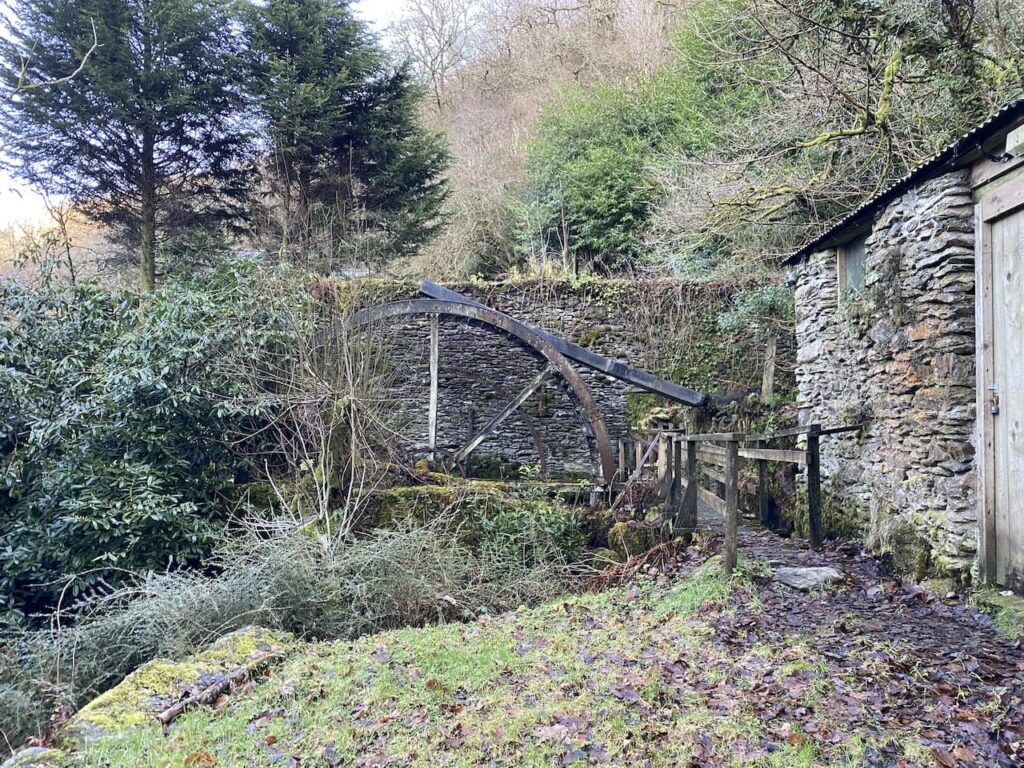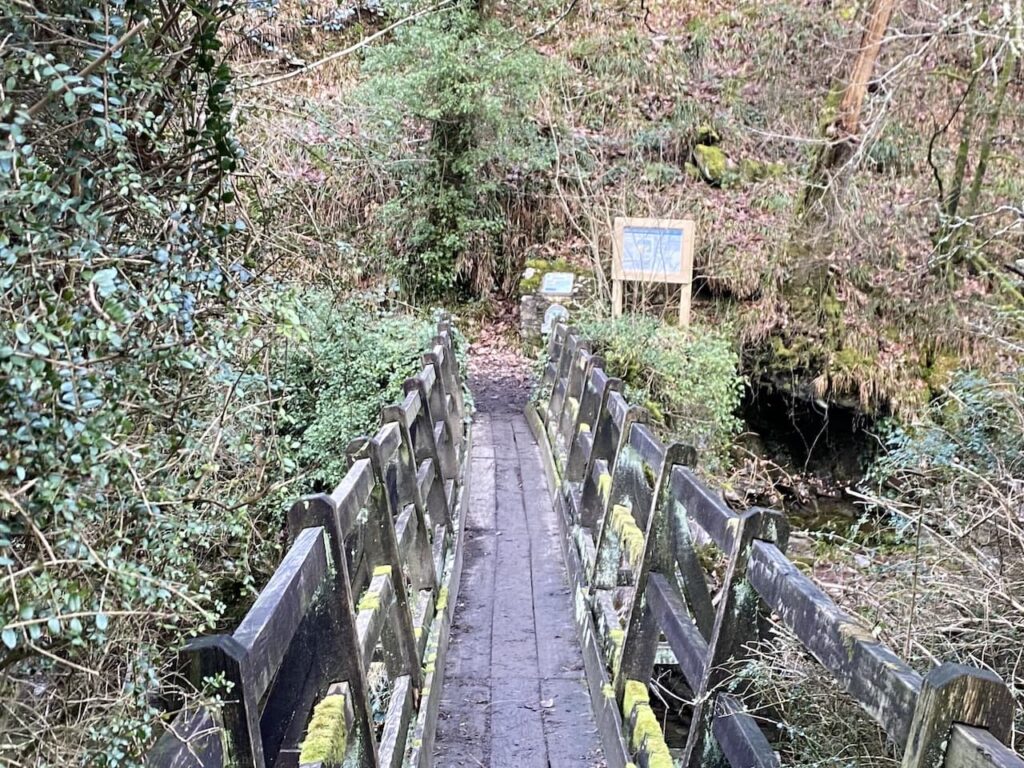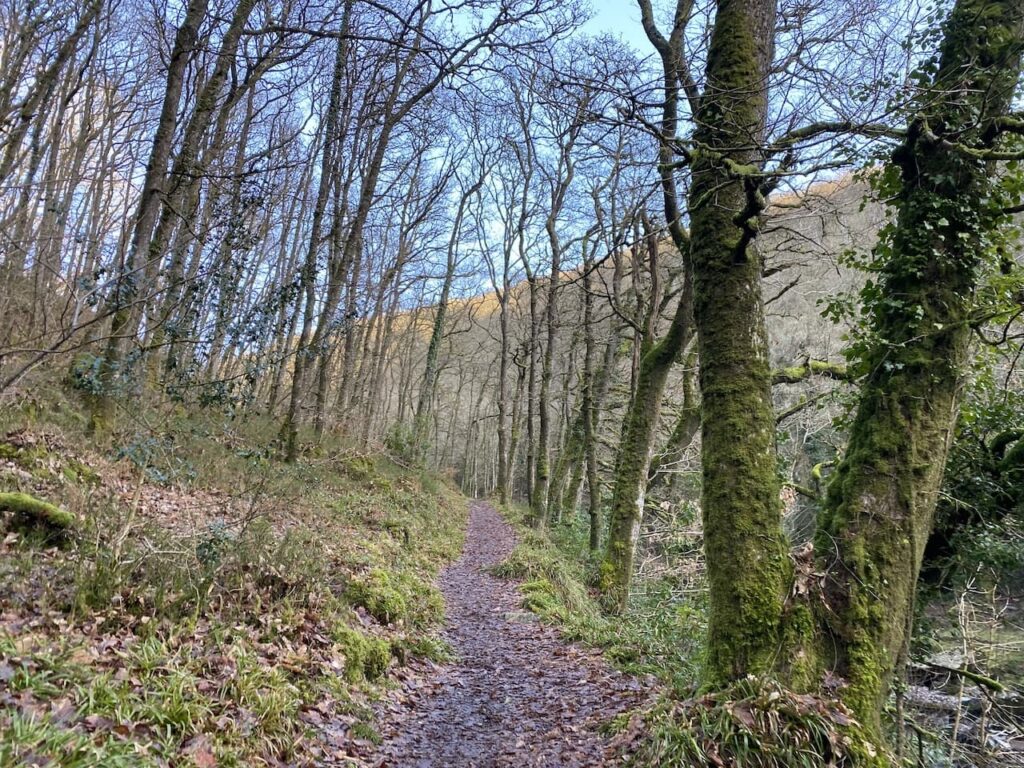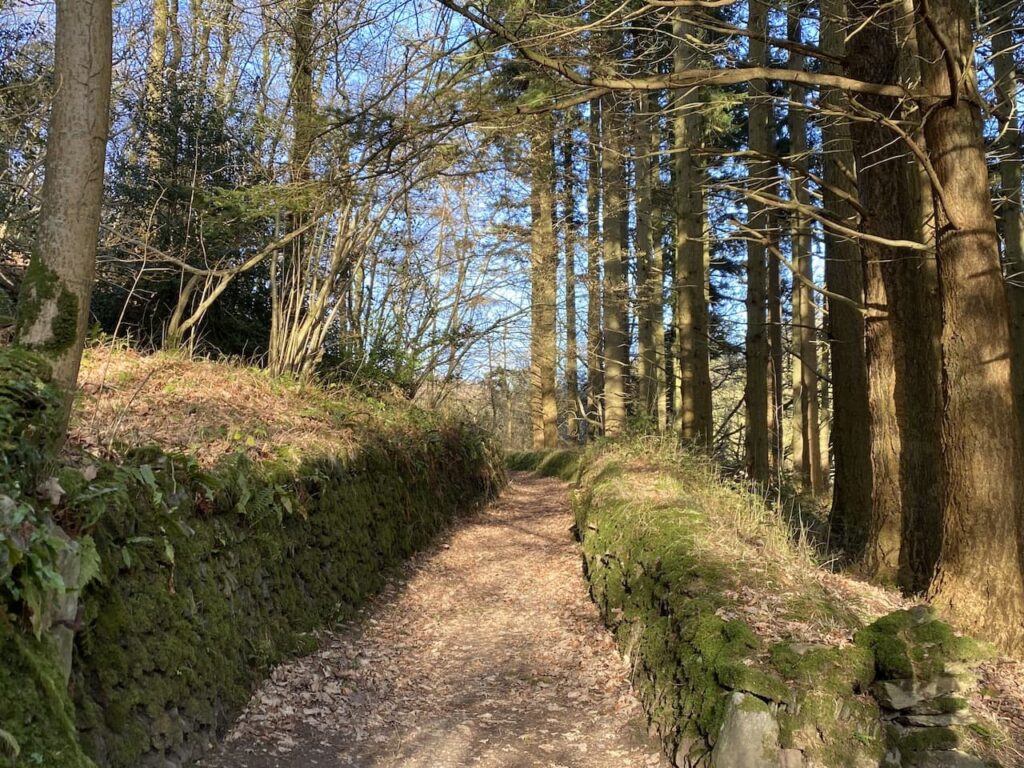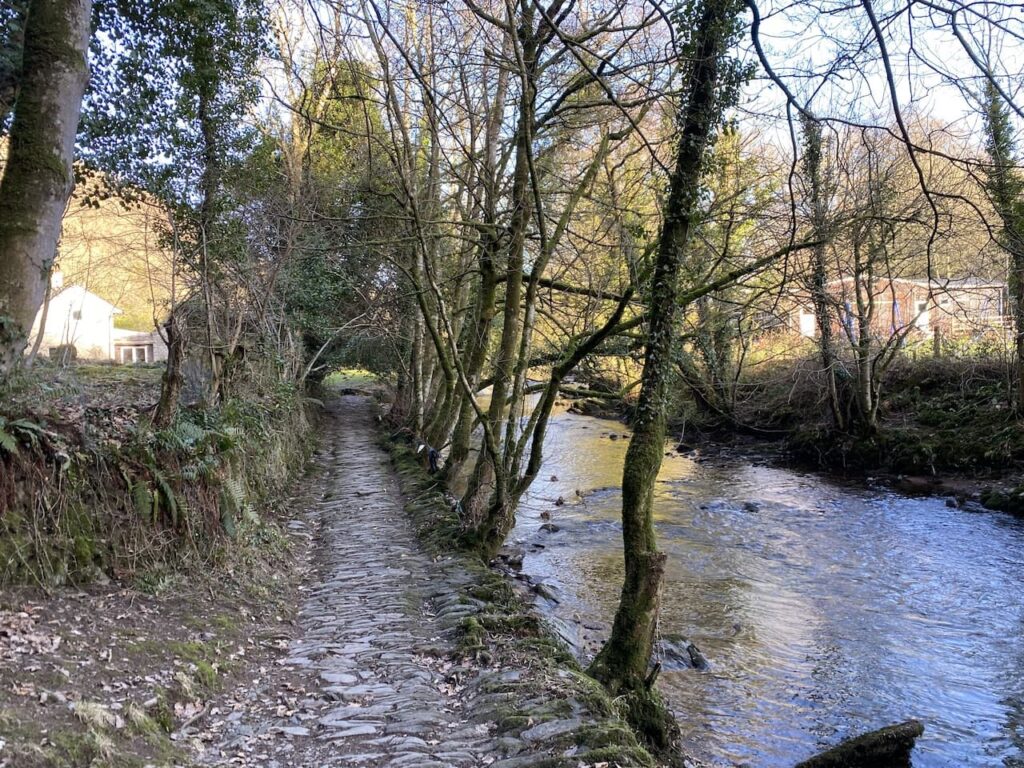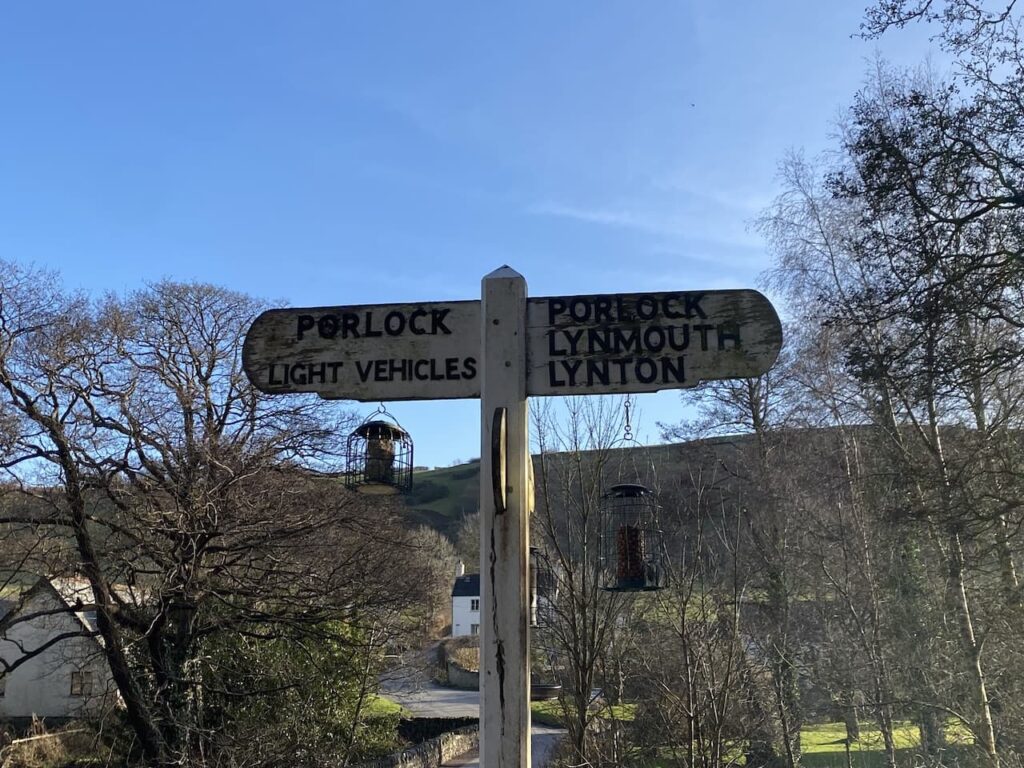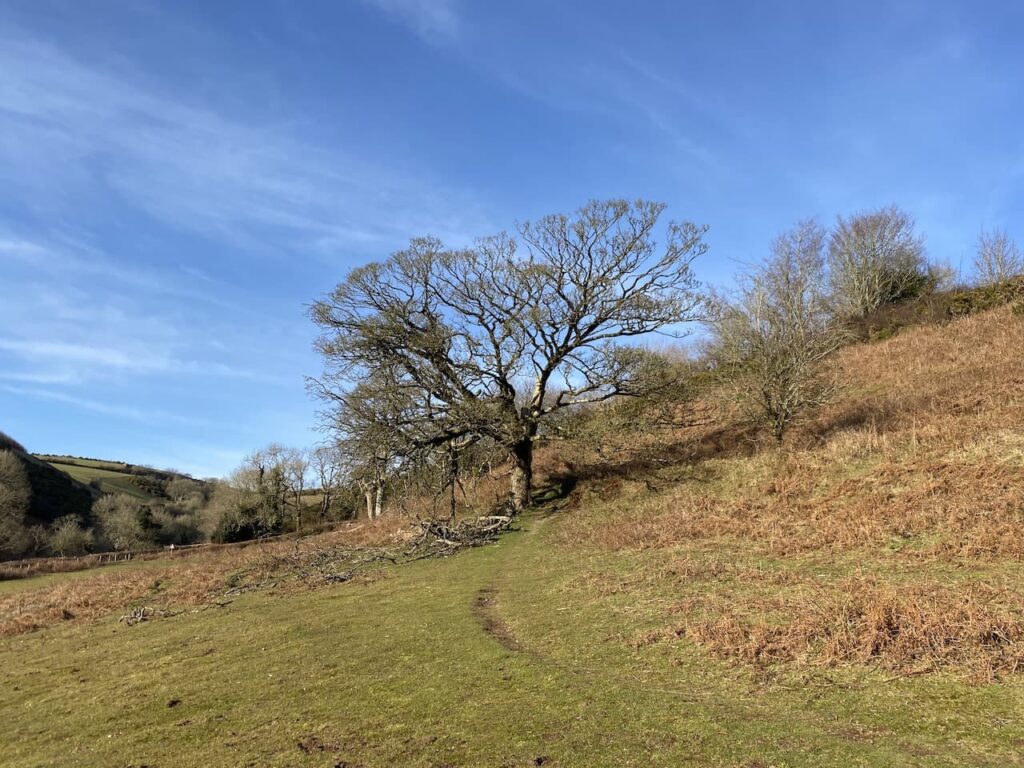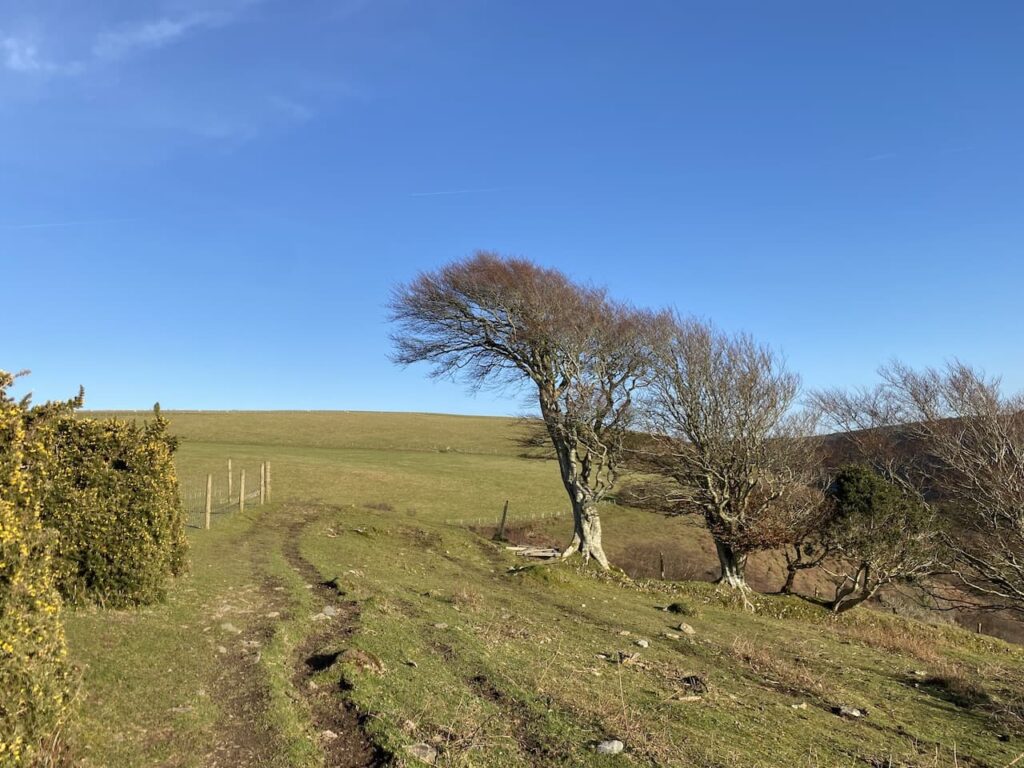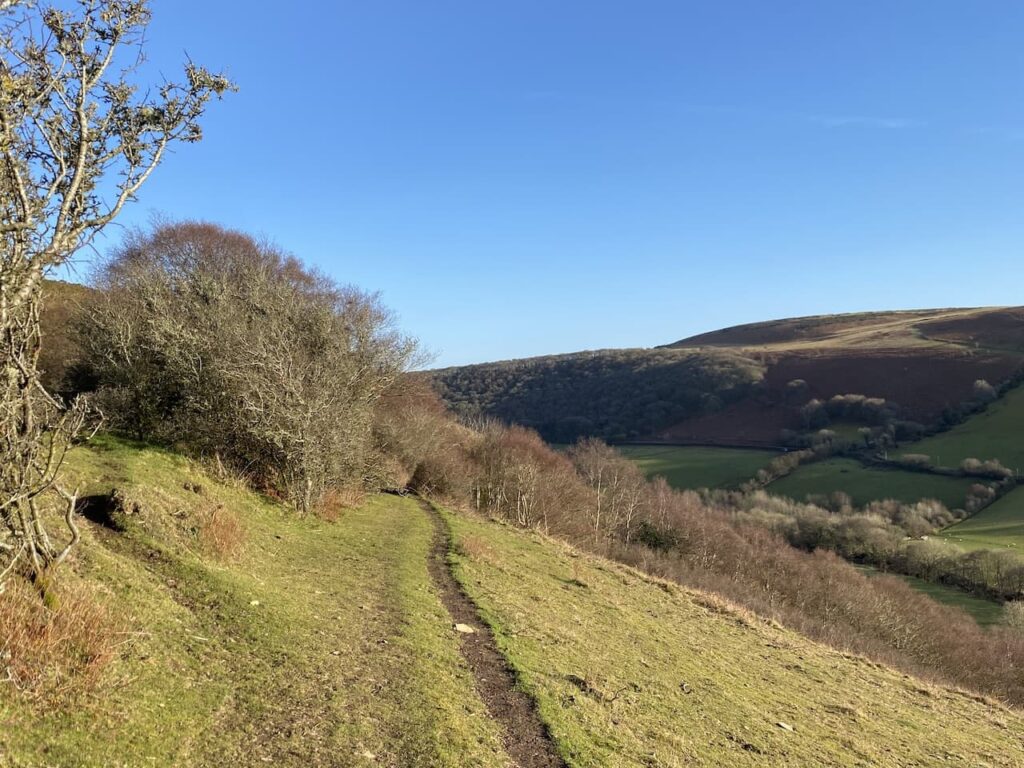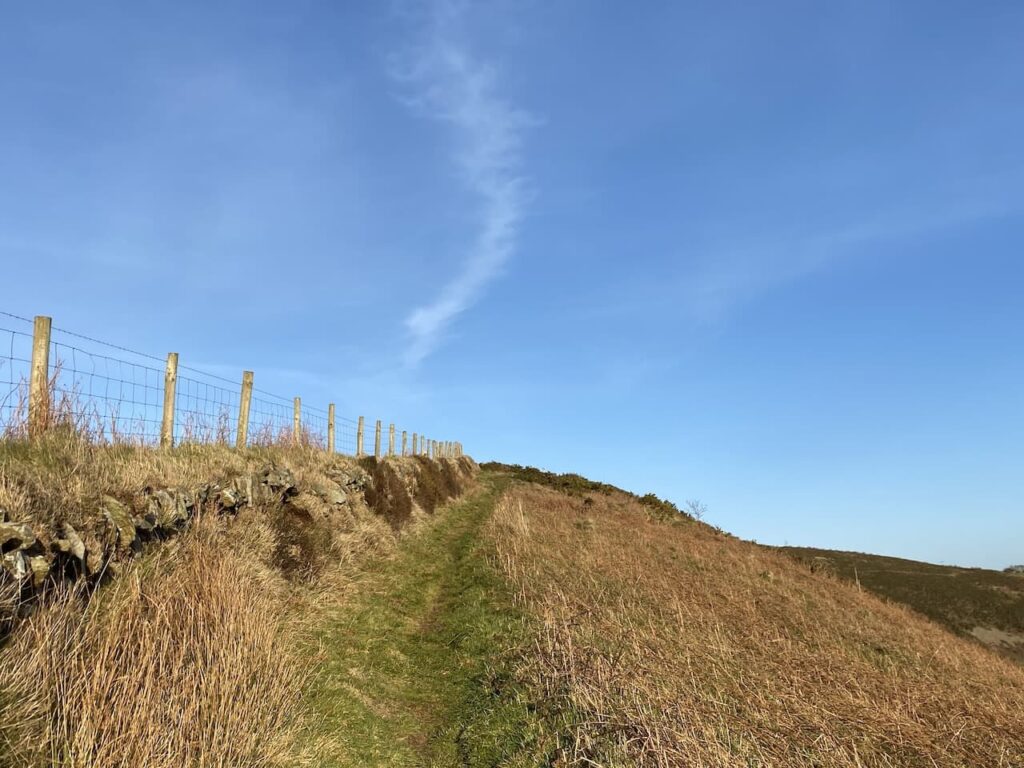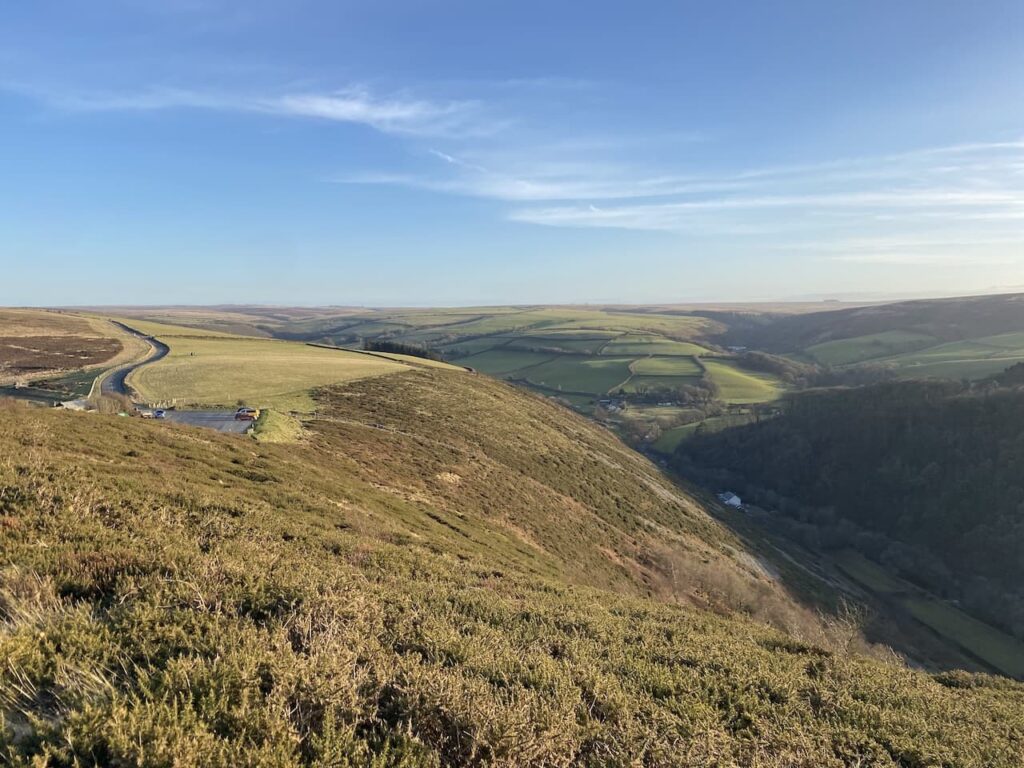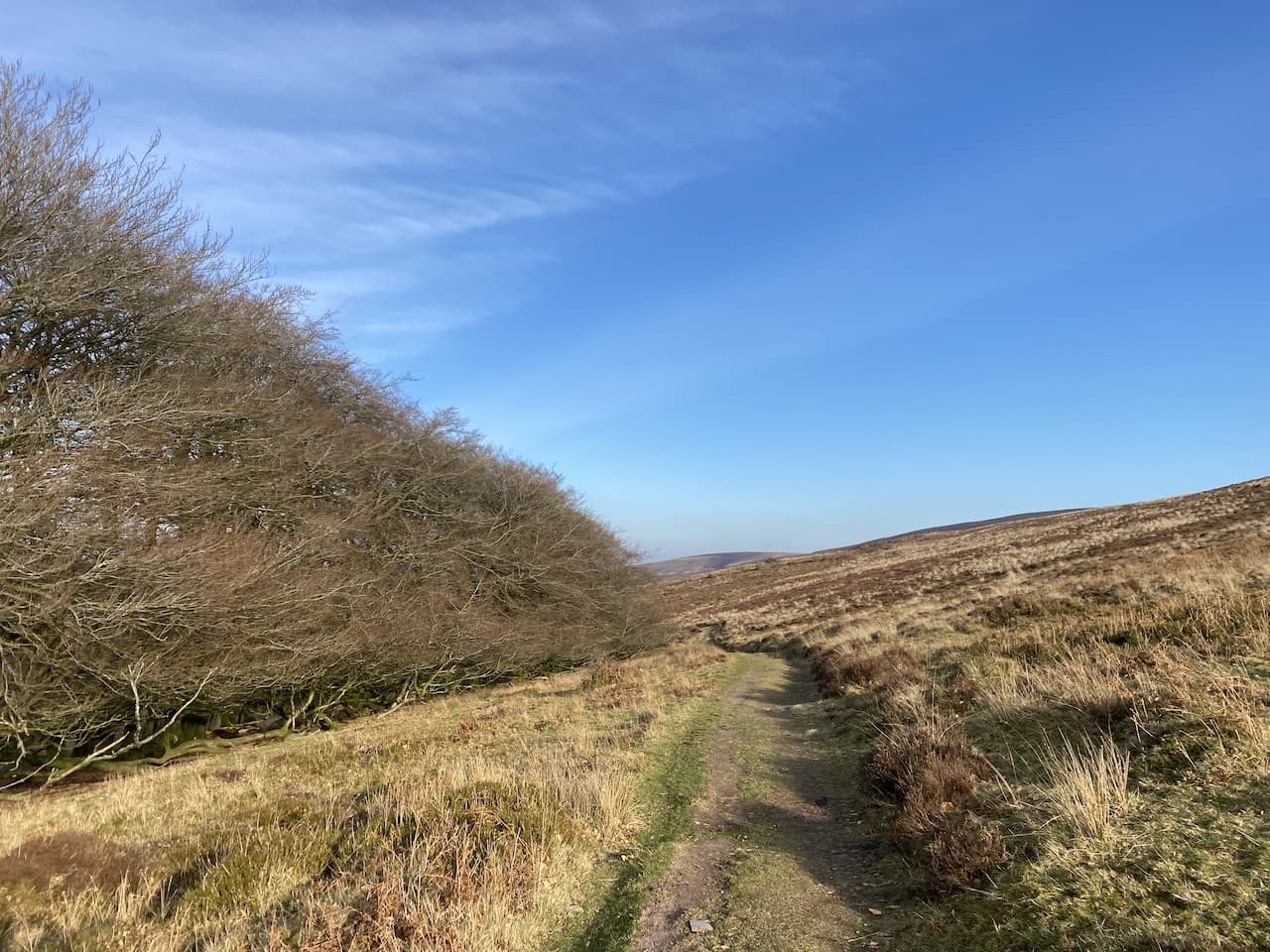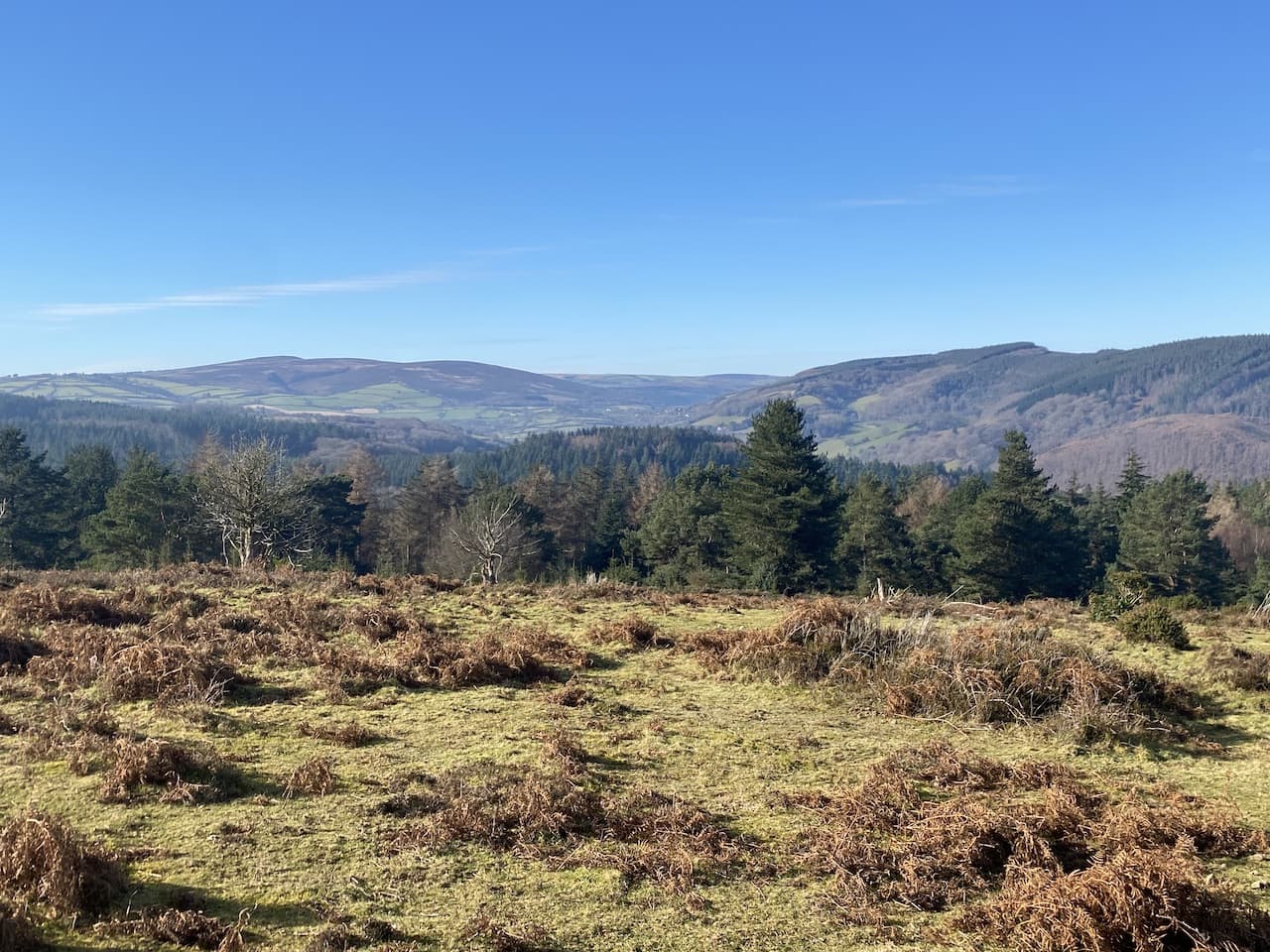After months of planning I am finally off on the first stage of my long distance walk. Yesterday was spent travelling from my home in Wiltshire to the starting point at the Beacon Inn in Haresfield. On the train journey between Bristol and Gloucester I passed the pub but it was a couple of hours later before I reached it after an interesting bus journey, where overhearing a loud conversation between two young women I learnt all about being inked, previously I thought this was called getting a tattoo. I then had a pleasant short walk across fields to reach the village.

With around one hundred and fifty miles to cover in the next six days I decided on a relaxing evening at the Beacon Inn and turned in for an early night. My plans were somewhat scuppered because I had failed to anticipate the regular fast trains thundering by. However as night fell the train’s frequency reduced and I managed a reasonable night’s sleep. After a hearty breakfast I am off. Wendy the landlady of the Beacon Inn wishes me luck on my venture.

From the pub I walk back into the village and turn right at a junction with a finger post to Haresfield Beacon. It is not too long before the road starts to ascend gradually and then more steeply as I pass College Farm.

Just after passing Ringhill Farm I go through a gate on the right to join the Cotswold Way heading towards Haresfield Beacon.

It is a cracking morning without a cloud in the sky as I follow the well walked path through fields.

The path leads to the Ordnance Survey Haresfield Beacon trig pillar. Most of the trigs I have bagged recently have been the standard concrete trigs so it is nice to see one built out of local stone. This is my 376th trig and it should be the first of a number over the next few days.

Staying with the Cotswold Way I turn and go along the edge of the hill with fine views.

After going close to a minor road the path goes under Bunker’s Bank and then heads out to the Haresfield Beacon Toposcope. Rather than the normal flat surface this one is a raised relief map of the surrounding area. I take a few minutes to admire the view towards the River Severn, in a couple of days’ time I will be walking beside the river.

Still staying with the Cotswold Way I head across the top of the hill towards a car park and pass a herd of cattle, they are very docile. I can only hope that all my encounters with cows on this walk are equally uneventful. After passing through the car park I join the minor road and follow it to a junction, I keep going straight on towards Edge. After a couple of hundred yards on Scottsquar Hill, just before reaching a junction, I leave the road and follow a footpath into Stockend Wood.

Initially the path goes along the top of the woods and then descends gradually through the trees to reach a lane, here I go to the right and pass the bottom of Maitlands Wood. The lane becomes a minor road and there are good views away to my left.

As the road starts to ascend towards Edge I take a lane on the left which passes a property and continues on to reach a narrow lane. I turn right and head uphill into Edge. I cross a B road and then very quickly reach the A4173 which I cross and turn to the left. Immediately there is a junction on the right with a fork I go right along Edge Lane to continue into the village. I have been walking for a couple of hours and stop for a cup tea on a bench under a tree.
Resuming my walk I take a lane which passes the Village Hall and then goes through a farmyard.

The footpath goes through a gate and then across fields to reach a junction of paths with the Cotswold Way, here I turn to the left and head steadily downhill through a pasture field and pass a standing stone with a marker on it that indicates it is 47 miles to Chipping Camden along the Cotswold Way.

The Cotswold Way leads down to Washbrook Farm, this former mill has been converted into a farmhouse and has some elaborate stonework facing the footpath.

After a slight uphill section I pass a playing field and tennis courts and continue into the attractive Cotswold village of Painswick.

After a wander around the village in search of a postcard to send to Lynnie I stop for a cup of tea and snack in the churchyard and notice the tell-tale signs of railings that would have been removed during World War II and smelted down to create armaments for the war effort.

I leave the Cotswold Way in Painswick and continue my route by going past the Town Hall to join Tibbiwell Lane and go downhill towards Brookhouse Mill. At the bottom of the hill I turn left on a footpath which is by a sluice gate for the old forge mill.

The path goes beside a stream and then enters fields. At a junction of paths I turn right and go uphill towards Dell Farm. After passing through the farm the footpath follows the farm drive to a minor road. Here I turn left, on my right is a row of houses and across the open fields to my left is a view of Painswick.

At the end of the lane I go right to join a footpath into Blackstable Wood. It is a warm day so the shade of the trees is very welcome.

On leaving the woods at a minor road in Jack’s Green I turn right and then at a signpost for Sheepscombe go left to descend steeply towards the village. After passing the village church I reach the war memorial and sit on a bench for lunch. It was beside this war memorial that the puppeteer and writer Walter Wilkinson made his first public performance in the late 1920’s.

I have walked about eight miles but this is only a third of today’s walk so despite it being a pleasant spot to sit I don’t linger too long and soon have the rucksack on my back again. My route continues on a footpath through the cemetery and then goes along a minor road heading towards the B4070. At the B road I cross and continue along a lane signposted to Miserden. After a third of a mile I leave the lane and take a footpath on the left which heads across a field towards Hazle Manor.
Emerging from the field I turn left and walk a short section beside the road before going over a stone stile on my right to follow a path across a field.

After passing Hill Top farm I go along a track to reach a minor road in Whiteway, I turn left and then after passing the last house on the right join a track on the right. Whiteway is an interesting development. The community was founded on 1898 by Tolstoyans, It was set up on forty-one acres of land. For many years the community lived under utopian socialist principles of shared ownership. These days the properties are privately owned,

I continue on the footpath into Barn Wood and after crossing a stream turn left to follow a track through Climperwell Wood. This leads me to a minor road where I turn left towards Climperwell Farm. After passing the farm entrance the lane heads towards a cross roads.

At the cross roads I go straight over and continue on the road for half a mile, passing Overton Farm and ignoring a track on my right, to reach a footpath into Cranham Wood. The path descends through an attractive area of woodland with an abundance of wild garlic.

There is a network of paths in the woods but I stick with the main path heading towards Cranham. Leaving the trees the path goes through Cranham Common and descends towards the village.

At a minor road in the village I turn right and head downhill passing the village hall on my left and then at the bottom of the hill go by the Cranham Scout Centre. The road is now uphill and I ignore a couple of footpaths on the right to reach a car park for Witches Tump. Here I leave the road and take a footpath that heads in a north westerly direction through the trees towards Buckholt Road.

I cross Buckholt Road and continue steadily uphill on a footpath into Buckholt Wood. As the path levels out it meets the Cotswold Way, here I turn left and follow the footpath towards Cranham Corner. After a short spell besides Buckholt Road I cross the A46 and continue to follow the Cotswold Way way-markers through Pope’s Wood.

The path joins a minor road and soon passes a parking area and then goes onto the open to soon reach a golf course on the open access land leading to Painswick Beacon. I leave the Cotswold Way here and stay close to the tree line on the right.

When the Ordnance Survey Trig Pillar on Painswick Beacon comes into view I take a path which leads to the viewpoint. I have previously bagged this trig, it is a cracking spot with far reaching views.

From the trig pillar I descend through an area of disused quarries to join the Wysis Way long distance footpath.

The Wysis Way is a 55 mile route which links Offa’s Dyke National Trail to the Thames Path National Trail and goes between Monmouth in Wales and Kemble in Gloucestershire. I leave the access land and then follow the trail for a short distance beside a road which I then cross to join a footpath on the far side going through trees to reach a minor road. I turn left to follow the Wysis Way towards Cud Hill. At an information board I stop for a breather and take in the view over the Severn Vale.

A little bit further along the lane I pass a folly, despite my later efforts to find out details of its history my searches prove unsuccessful. Apparently there is a memorial to the architect Detmar Blow (1867-1939) a few hundred yards along from the folly, so presumably there is a connection.

Soon after the folly I take a footpath on the right with a Wysis Way fingerpost. The path quickly follows a track surrounded by Blackthorn bushes in bloom.

At a junction of paths I go right to stay with the Wysis Way, in the distance in front of me is Robins Wood Hill. I will head there later before going into Gloucester.

The path is not way-marked but I follow the route others have taken through the field and then continue on a track along the edge of a field leading towards paddocks at Hazel Grove.

After following the path around the paddocks I enter woods and go steeply downhill and follow the Wysis Way across fields to a B Road. Here I turn right and cross the M5 and continue into Sneedham’s Green.

The path I had planned to take is too overgrown so I turn to the right and join a path on the left which takes me onto the edge of the Gloucester Golf Course.

I am still on the Wysis Way but have also joined the Glevum Way, this is a 24 mile circular walk around the outskirts of Gloucester which was devised in 1991 by local ramblers.
I soon leave the Glevum Way as it turns left and I head diagonally across a field to reach a gate and then turn right along a track which follows the contour line around Robins Wood Hill. At a clear path on the left I start a steep ascent. It is a warm afternoon and having walked over twenty miles so far today my rucksack is beginning to weigh heavy. I stop a couple of time on my way up the hill to take in the views and draw breath, making use of one of several benches.

At the summit of Robin’s Hood Hill there is an Ordnance Survey trig pillar, my 377th.

Alongside the trig pillar is a beacon, the current beacon was erected in 2000 but this is the site of one of the beacons used in 1588 to warn of an invasion by the Spanish Armada. It has commanding views over the River Severn and would also have been a good vantage spot to observe the other beacons away to the south west.

There is the added bonus of a toposcope on this hill and I use this to spot points on the horizon before following a track downhill towards Gloucester on the Wysis Way.

After going through an open area the path heads through attractive woodland before continuing down with views across Gloucester with the Malvern Hills in the distance.

After going through the car park for Robin’s Wood Hill I join a road and follow the Wysis Way towards the centre of Gloucester. My overnight accommodation is in the Gloucester Travelodge. After checking in and having a shower I head to the docks which have undergone major regeneration since I was last here. I have walked almost 24 miles today, with plenty of steep hills so I am ready for some food and drink. There is no shortage of spots to choose from but I won’t be out too late because I have another full day’s walking tomorrow.

You can view this 23.5 mile walk on OS Maps and download the GPX File Here
To follow this walk you will need Ordnance Survey OS Explorer – 179 – Gloucester Cheltenham & Stroud
26th May 2023
© Two Dogs and an Awning (2023)
All information on this site is provided free of charge and in good faith and no liability is accepted in respect of damage, loss or injury which might result from it. To the best of my knowledge the routes are entirely on public rights of way or within areas that are open for public access.
Walking can be hazardous and is done entirely at your own risk. It is your responsibility to check your route and navigate using a map and compass.
